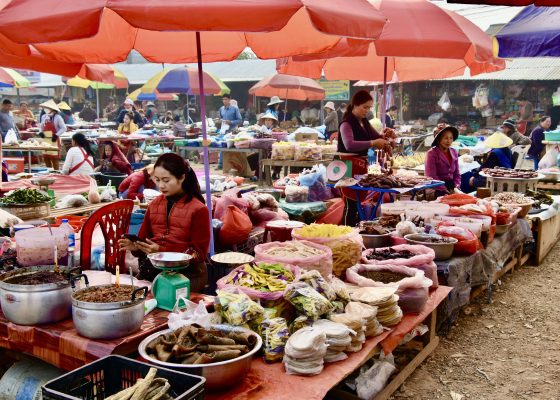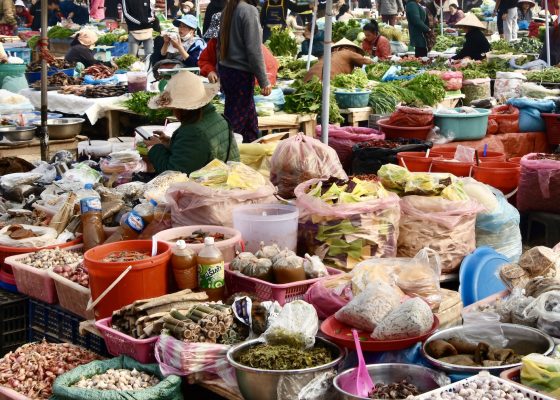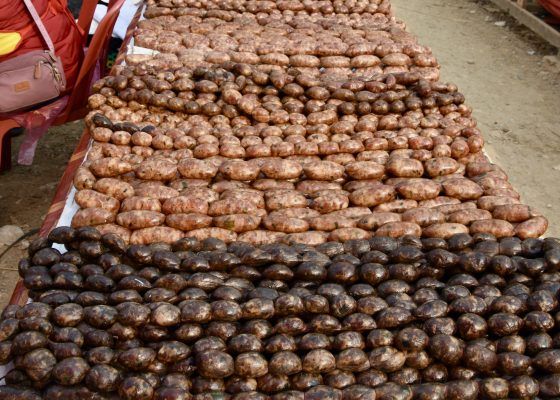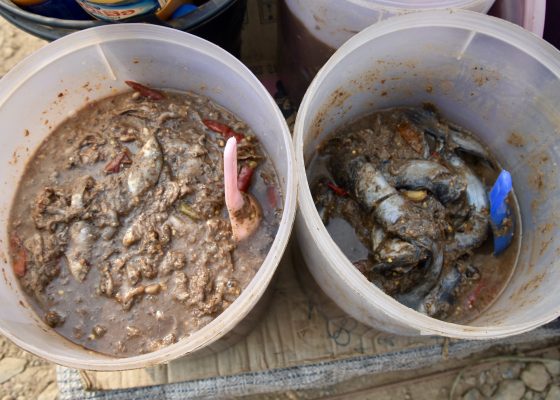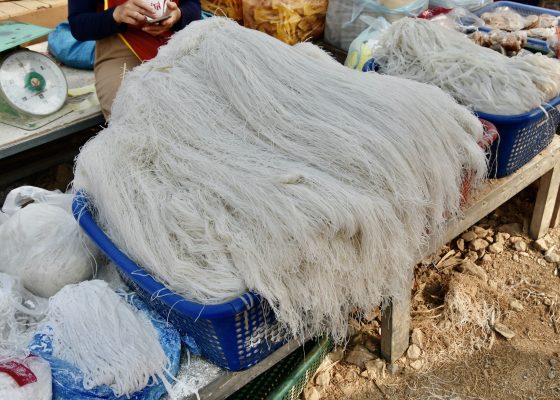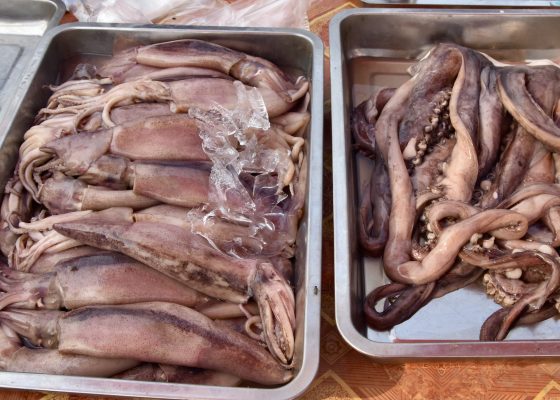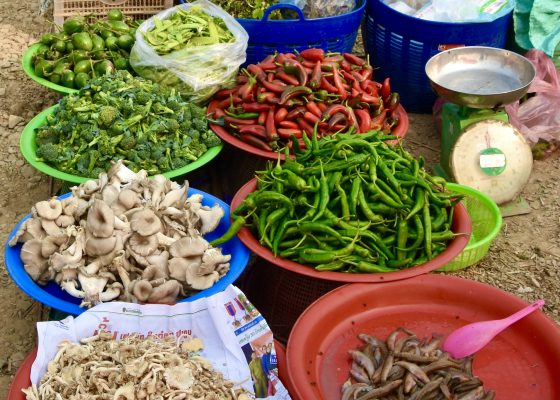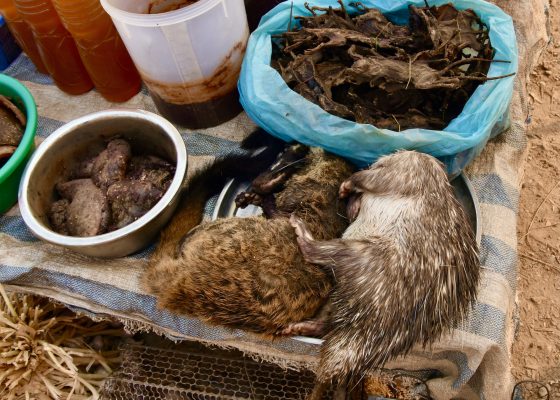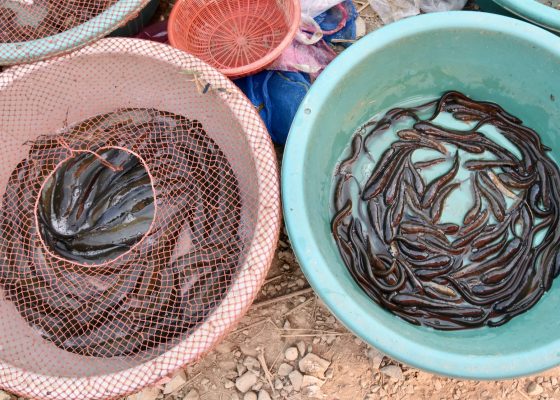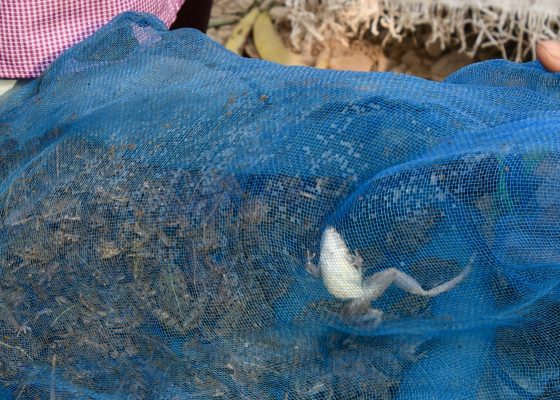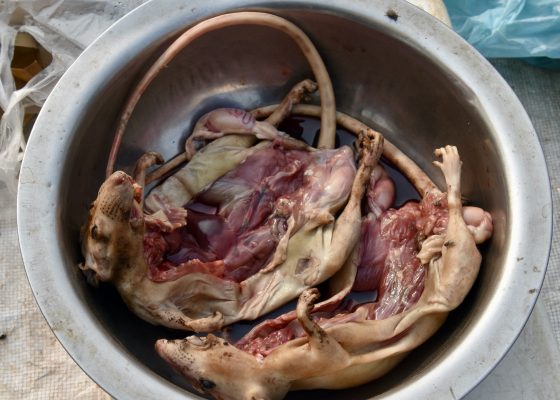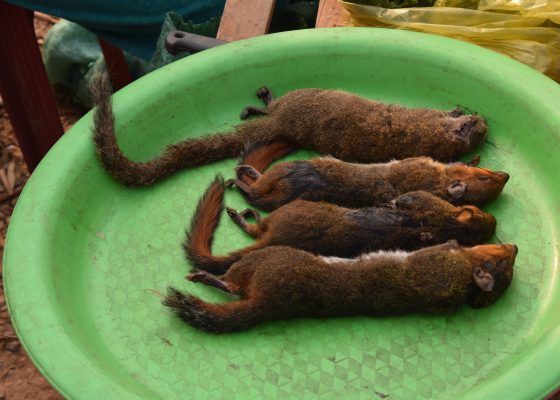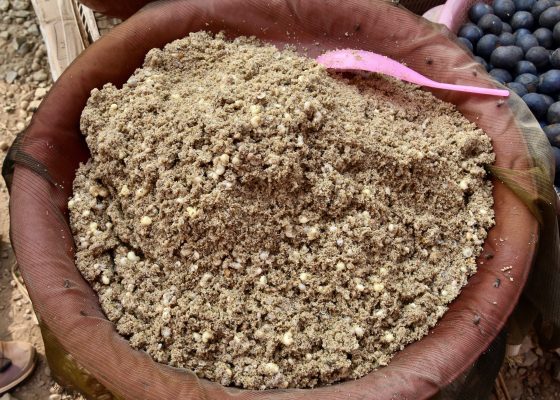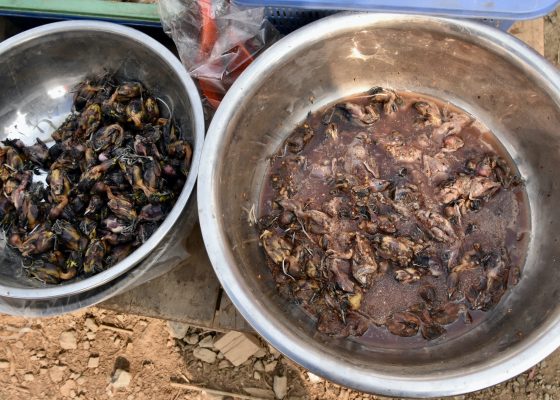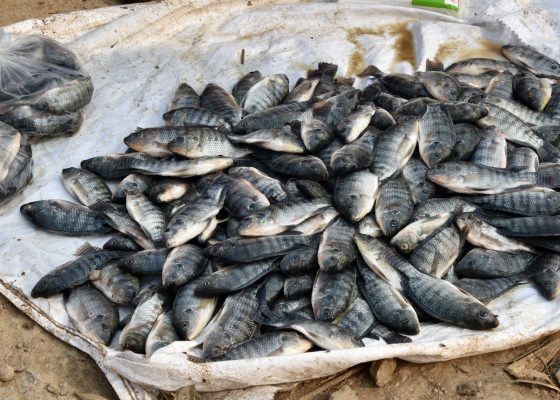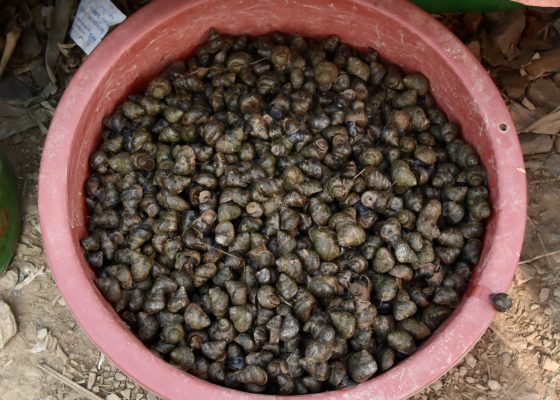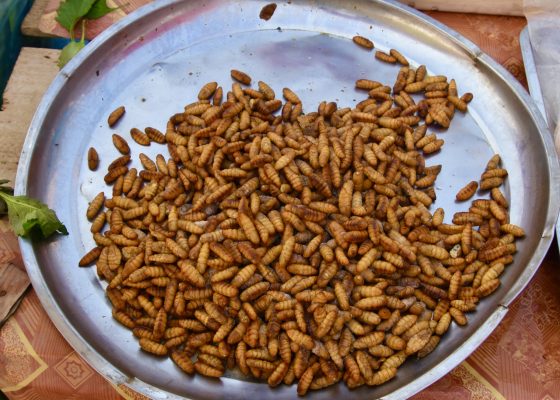Plain of Jars – Laos’ Greatest Mystery
In this post we’ll visit one of Laos’ three UNESCO World Heritage Sites and the scene of one of the world’s most intriguing archaeological mysteries, the Plain of Jars. Nobody knows who built the stone monuments that resemble gigantic jars or why they built them, but everyone who visits this remote place comes away with a sense of awe. Join our small Adventures Abroad group as we visit three different sites and then drop in at a museum dedicated to helping victims of the unexploded ordnance that remains from the Vietnam War.
Our journey today starts in the small city of Phonsavan where we arrived yesterday after visiting Hmong and Khmu villages on the way from Luang Prabang. Before heading to the Plain of Jars we did a walking tour of the Phonsavan wet market which was eye opening to say the least. The number and nature of the creatures being offered for sale here definitely brought to mind the debate as to whether or not Covid originated in such a market in Wuhan, China. What follows is a gallery of photos taken in the market that morning. Double click to open to full size, but be warned that some of the images might be disturbing. Personally I was disappointed to see that some endangered species were still being killed for human consumption, but I don’t have to live in Laos and it’s not for me to judge. I was impressed by the sausages and tried some later that day and they were delicious. Who would have thought to associate Laos with great sausages?
- Phonsavan Market
- Phonsavan Market 2
- Varieties of Sausage
- Fermented Fish
- Rice Noodles
- Octopus & Squid
- Mushrooms & Chilis
- Porcupine, Badger & Bats
- Live Catfish & Eels
- Bag of Live Frogs
- Disembowled Rats
- Fresh Squirrels
- Ant Eggs
- Baby Birds
- Fresh Fish
- Snails – One Trying to Escape
- Silkworms
After the market we drove the short distance outside of the city to the Plain of Jars Visitor Center where we had a brief stop before visiting the first of three separate sites. But first, just what the heck is the Plain of Jars and what do we know about it?
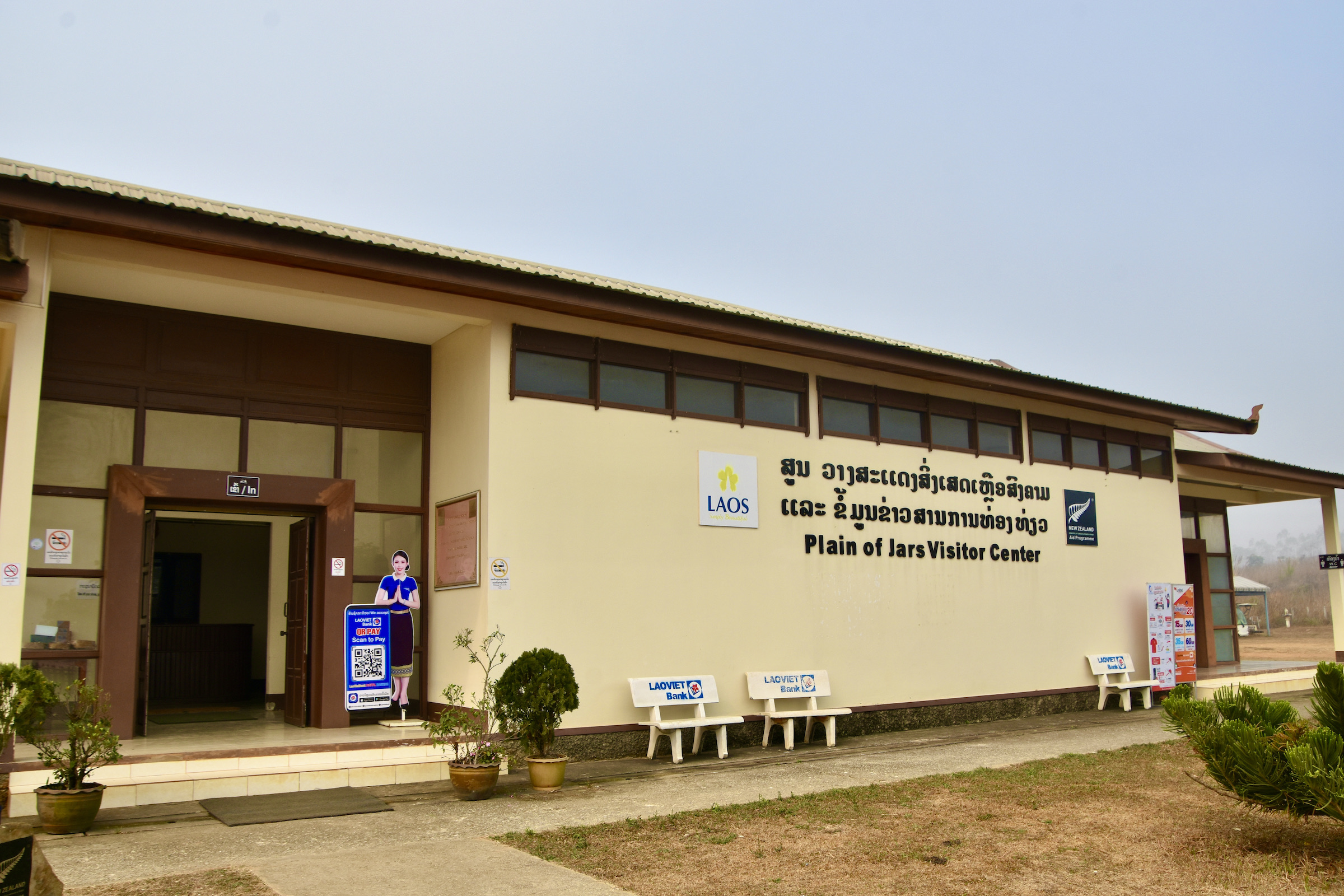
The Plain of Jars
The best place to start is with the description provided by UNESCO when the Plain of Jars was inscribed as a World Heritage Site in 2019.
The Plain of Jars, located on a plateau in central Laos, gets its name from more than 2,100 tubular-shaped megalithic stone jars used for funerary practices in the Iron Age. This serial property of 15 components contains large carved stone jars, stone discs, secondary burials, tombstones, quarries and funerary objects dating from 500 BCE to 500 CE. The jars and associated elements are the most prominent evidence of the Iron Age civilization that made and used them until it disappeared, around 500 CE.
This sounds pretty definitive as to the purpose for which the jars were created and when, but on other sites you’ll find references to recent scientific techniques that have dated them to as early as 1240 BCE. The major problem seems to be who built them. The Plain of Jars is a bit of a misnomer because it would lead you to believe that there was one large site on a plain and until I was preparing for this trip that is what I thought was the case. The photos one usually sees are from the most famous site which is indeed on a plain. However, there are now more than ninety sites around the Xiangkhoang Plateau that have at least a few jars with the largest having over 400. Clearly creating these jars which are carved out of five different types of stone and moving them to their current locations was a major undertaking, but there are virtually no traces of the civilization that was behind it. Local legend says it was the work of a race of giants.
The idea that they were used as funerary urns comes quickly to mind, but that turns out to be a far too simple explanation as they don’t contain the remains of bodies. They do however have traces of what might have once been bodies so the current thinking is that they were used to hold bodies for some time and purpose and then removed for burial elsewhere. There are also indications that a cave we’ll visit at Site 1 was used as a crematorium so that further complicates the picture. So while knowing who built the Pyramids of Giza or the Great Wall of China helps a bit, it is the fact of their very existence that is the most compelling reason to visit. So it must be with the Plain of Jars. We don’t know why they are here, but they are and that’s enough reason to visit one of most unique archaeological sites on the planet.
What made it even more interesting is that during our visit in March 2023 China, which makes up the vast number of visitors to Laos, was still in lockdown and we had the Plain of Jars almost entirely to our small Adventures Abroad group.
Site 1
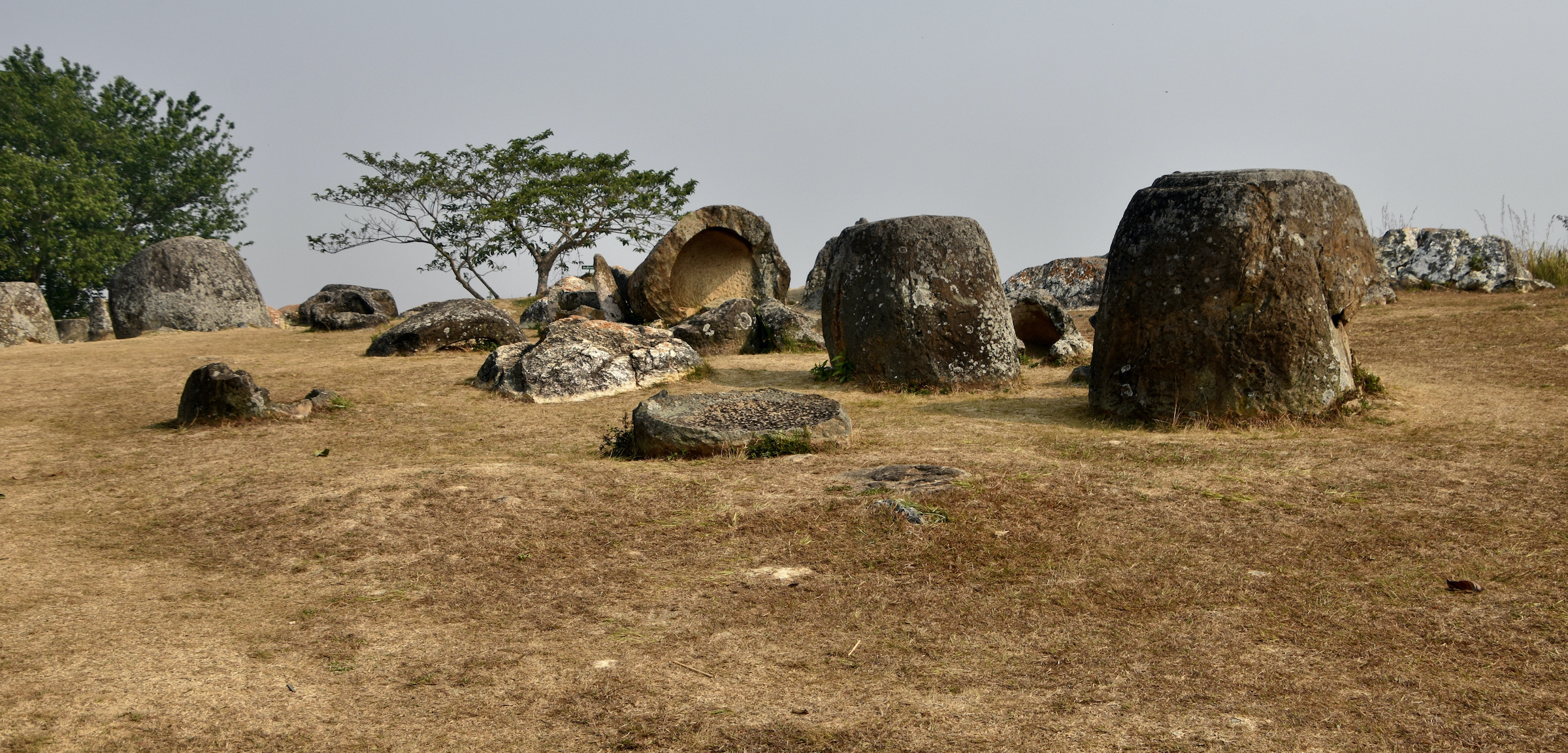
Site 1 is the closest to Phonsavan and has over 300 jars making it the one that appears in most photographs. It is also by far the most visited although you wouldn’t know that today. This is looking down from a small knoll near the entrance. Note that the perpetual haze from slash and burn agriculture makes everything a bit unclear.
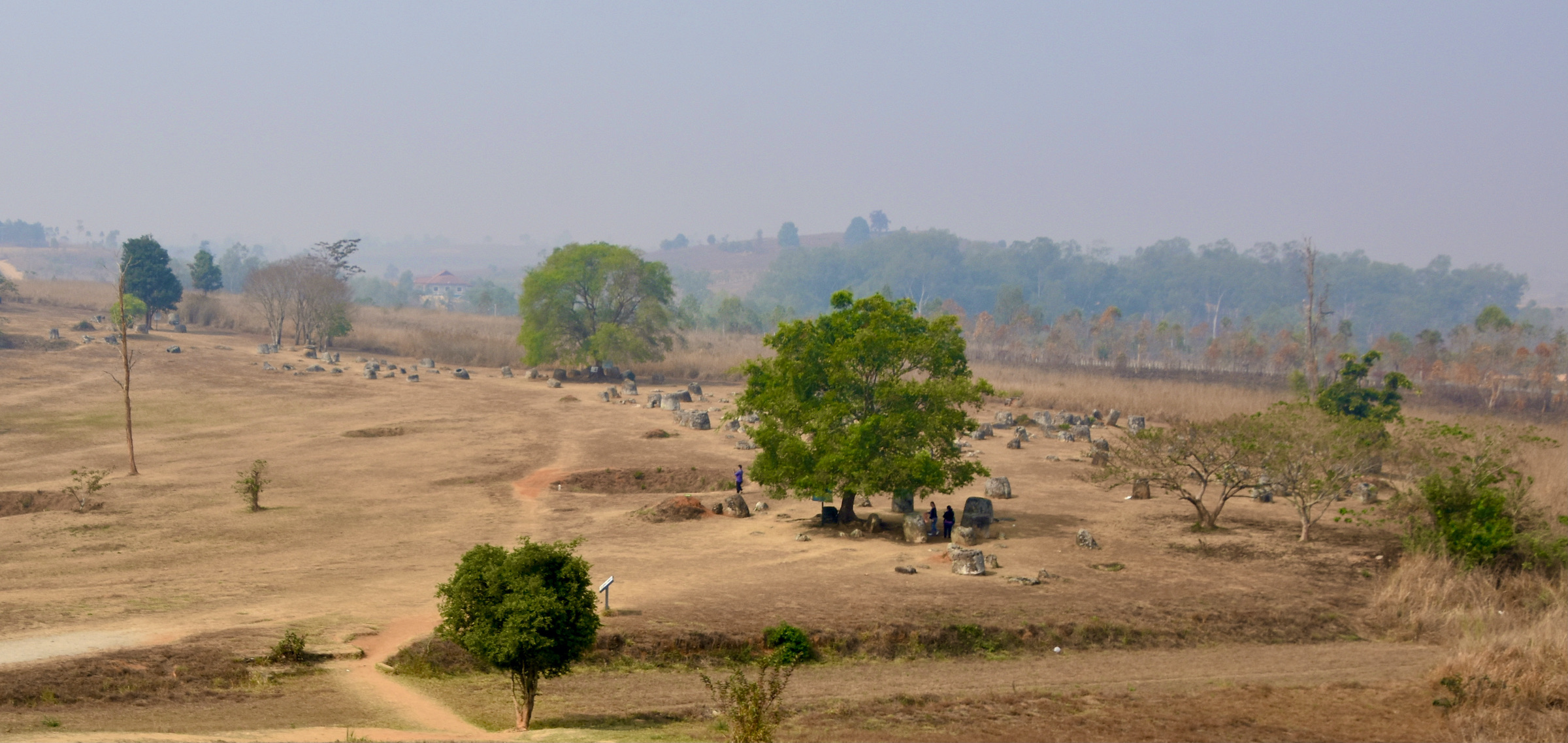
This is our group walking down from the knoll onto the Plain of Jars Site 1.
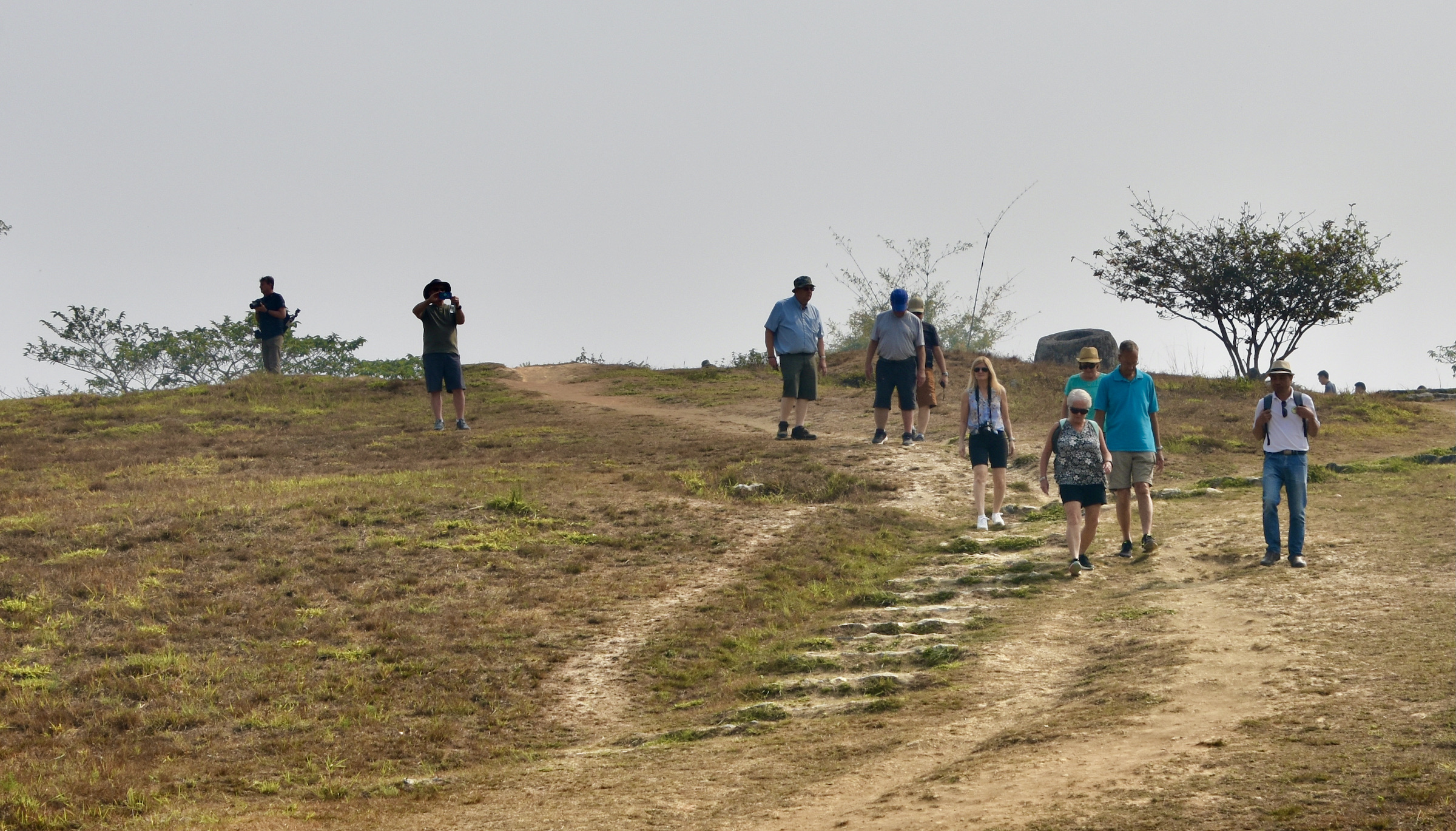
A closer look reveals this scene with jars everywhere, most of them broken.
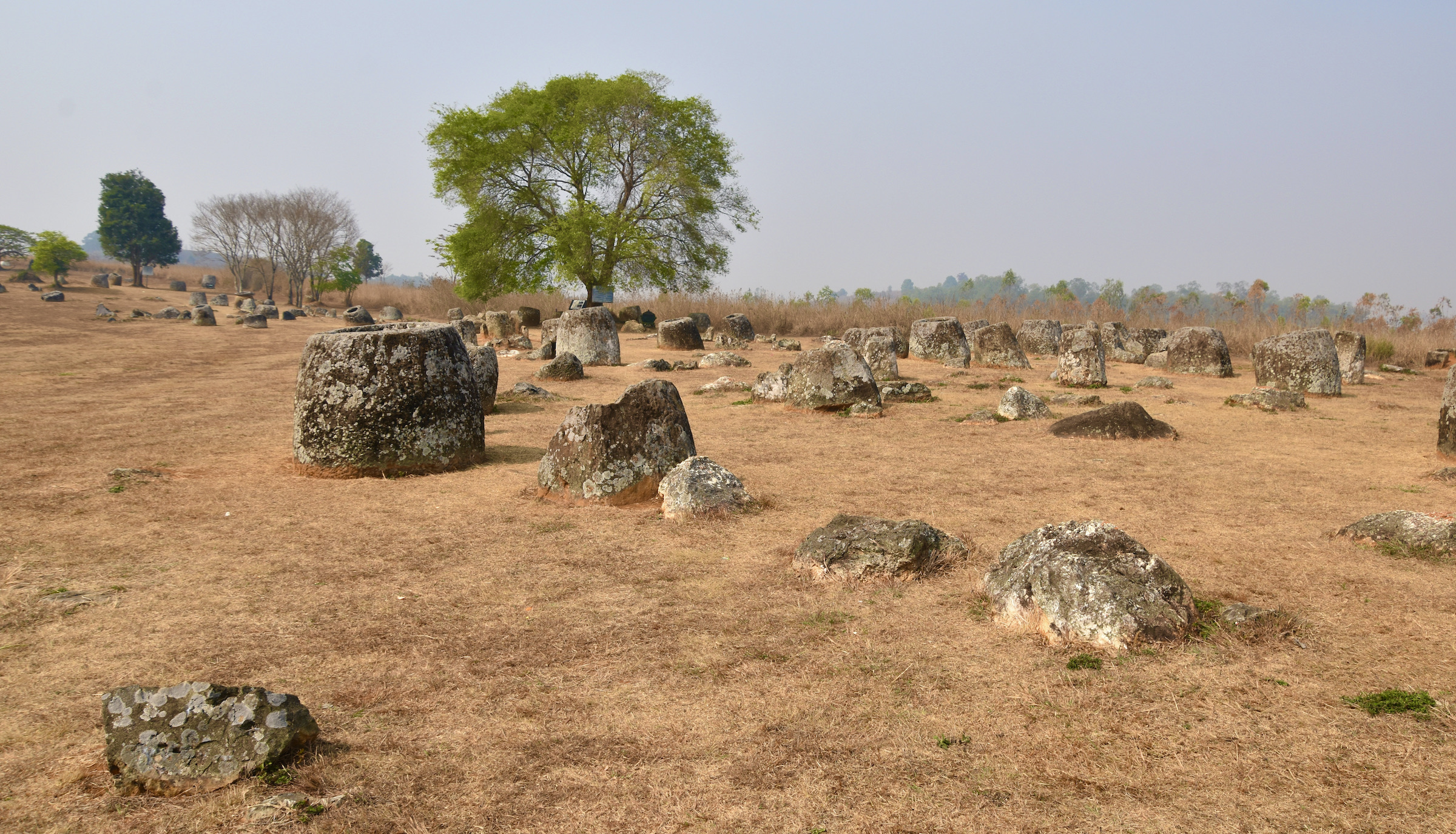
However, there are enough jars still in good shape to get an appreciation of what they must have looked like before being destroyed by an event I’ll discuss shortly.
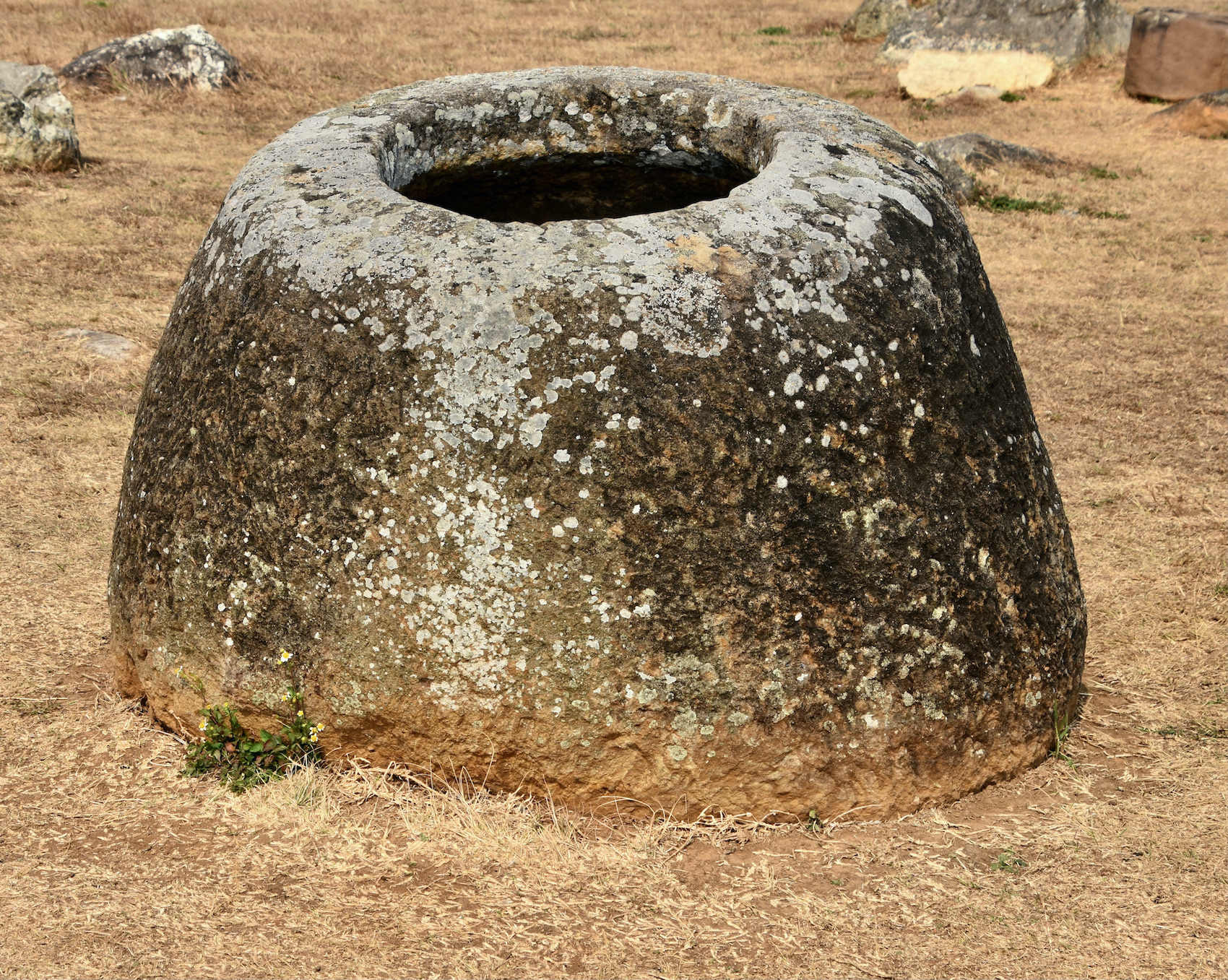
Our local guide Ta points us to the only one that still has its original lid.
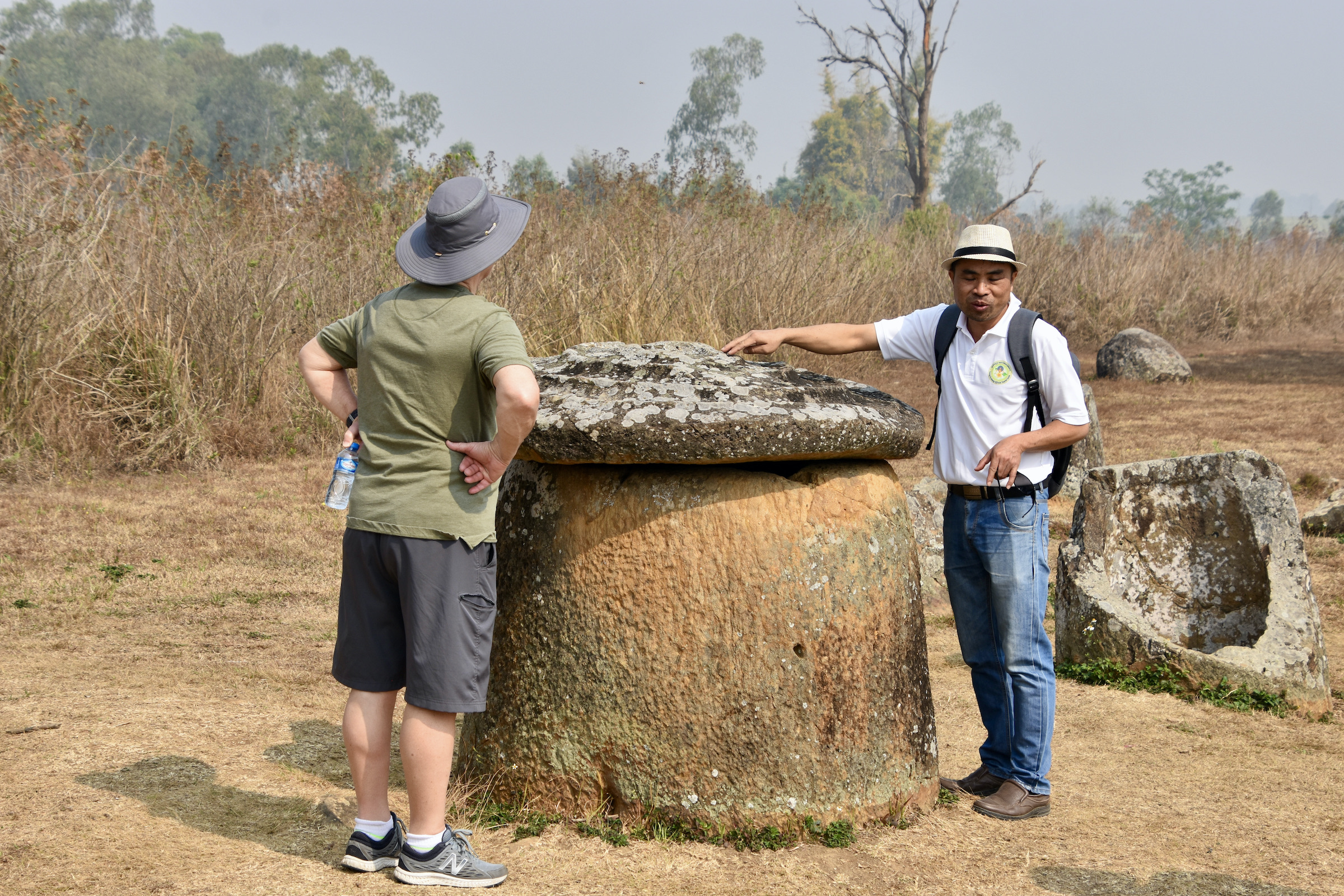
We pass through Site 1 and take a final look back at what is a pretty damn impressive picture.
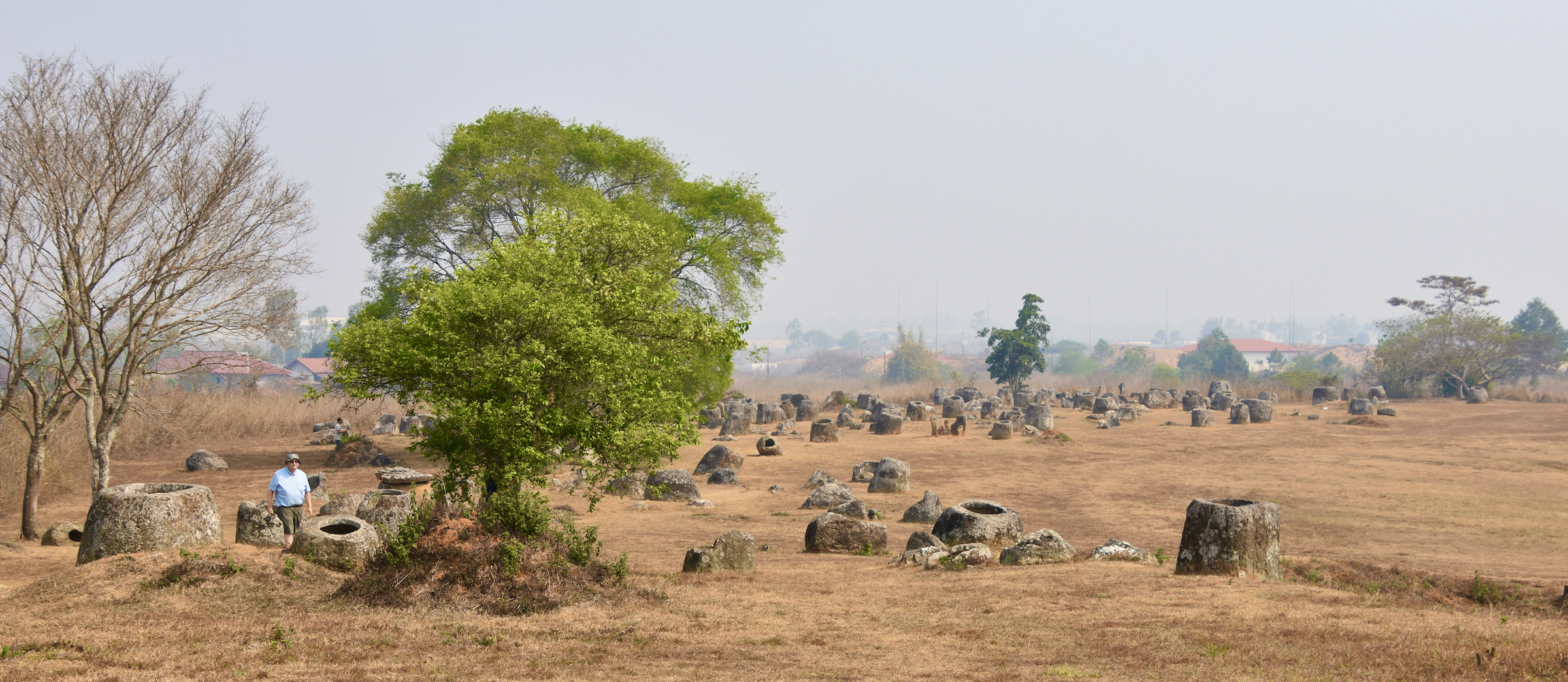
I mentioned a cave that might have been a crematorium and that’s quite close to Site 1.
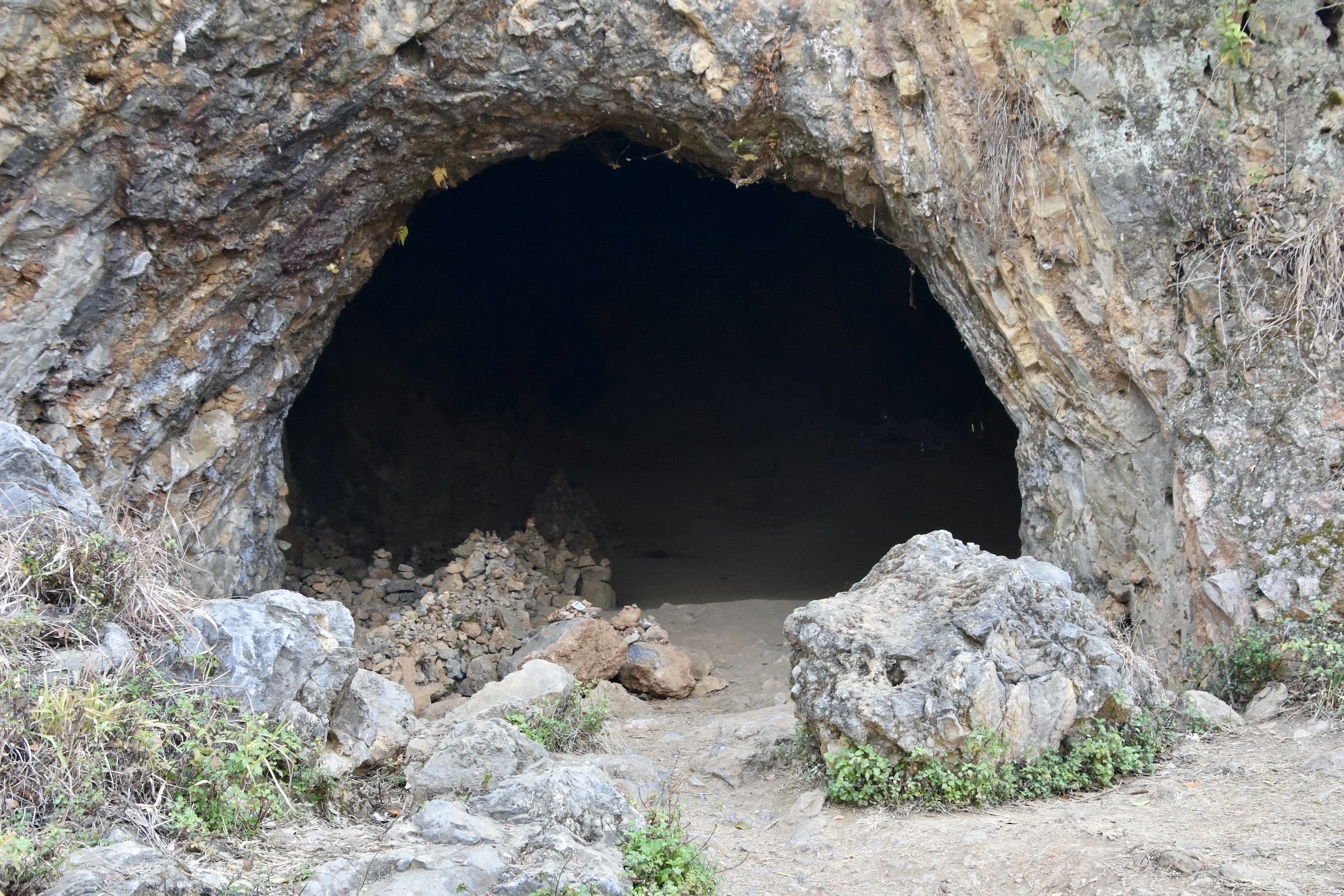
Inside there are hundreds of small rocks that have been put in place to commemorate a person who was killed either during the Secret War I wrote about in the introductory post on Laos or by stepping on unexploded ordnance after the war.
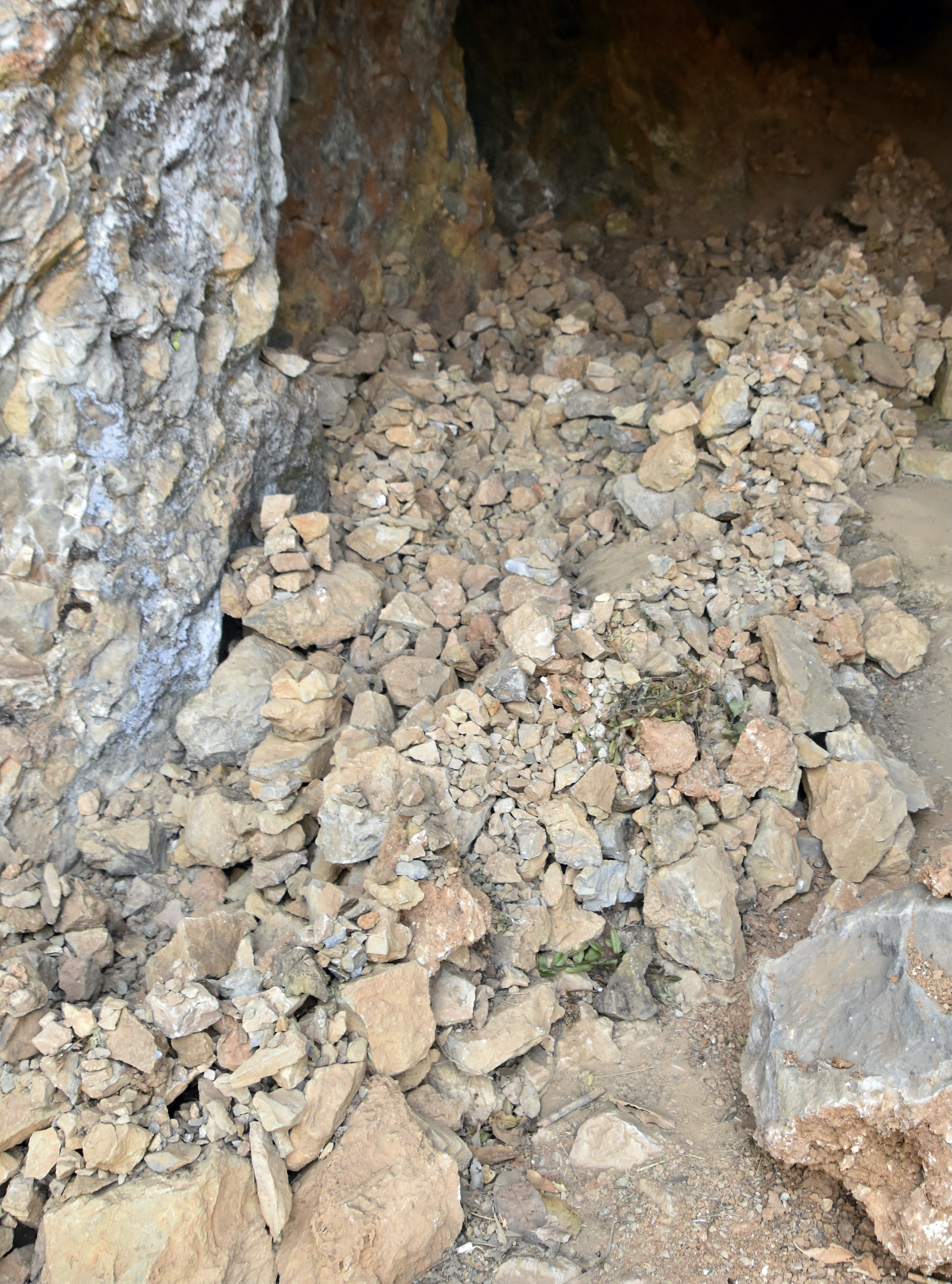
This is where the ancient pre-history of the Plain of Jars comes crashing into the reality of 20th century warfare.
We are now standing on the most bombed place on earth, ever. Between 1964 and 1973 the United States Airforce dropped over 250 million bombs on the Plain of Jars drying to dislodge the Viet Cong and Pathet Lao forces that were congregated here, many in this cave. Evidence of the bombing is everywhere as are the trenches dug by the Communist forces. It’s also the reason why so many of the jars are destroyed.
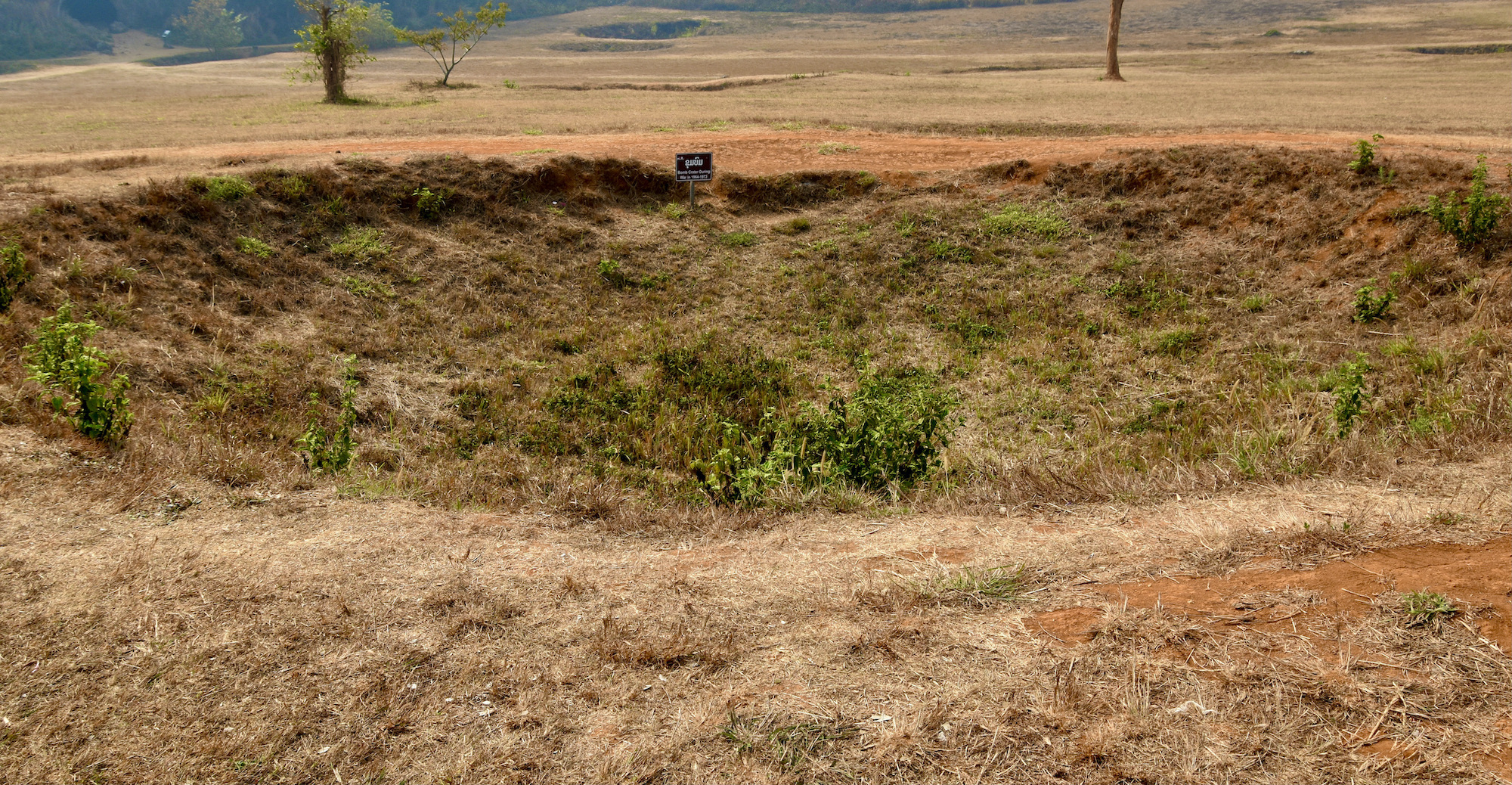
As if that wasn’t bad enough, much of the ordnance that was dropped were cluster bombs which had a very high rate of failing to detonate. That doesn’t mean they were duds. Over 25,000 Laotians have been killed or maimed by stepping on them since the war ended over fifty years ago. Many of the Plain of Jars sites are still off limits because of this.
Site 2
Site 2 is not on a plain, but on top of a small rise which is now heavily forested with some very old trees. This is our group making its way up to Site 2.
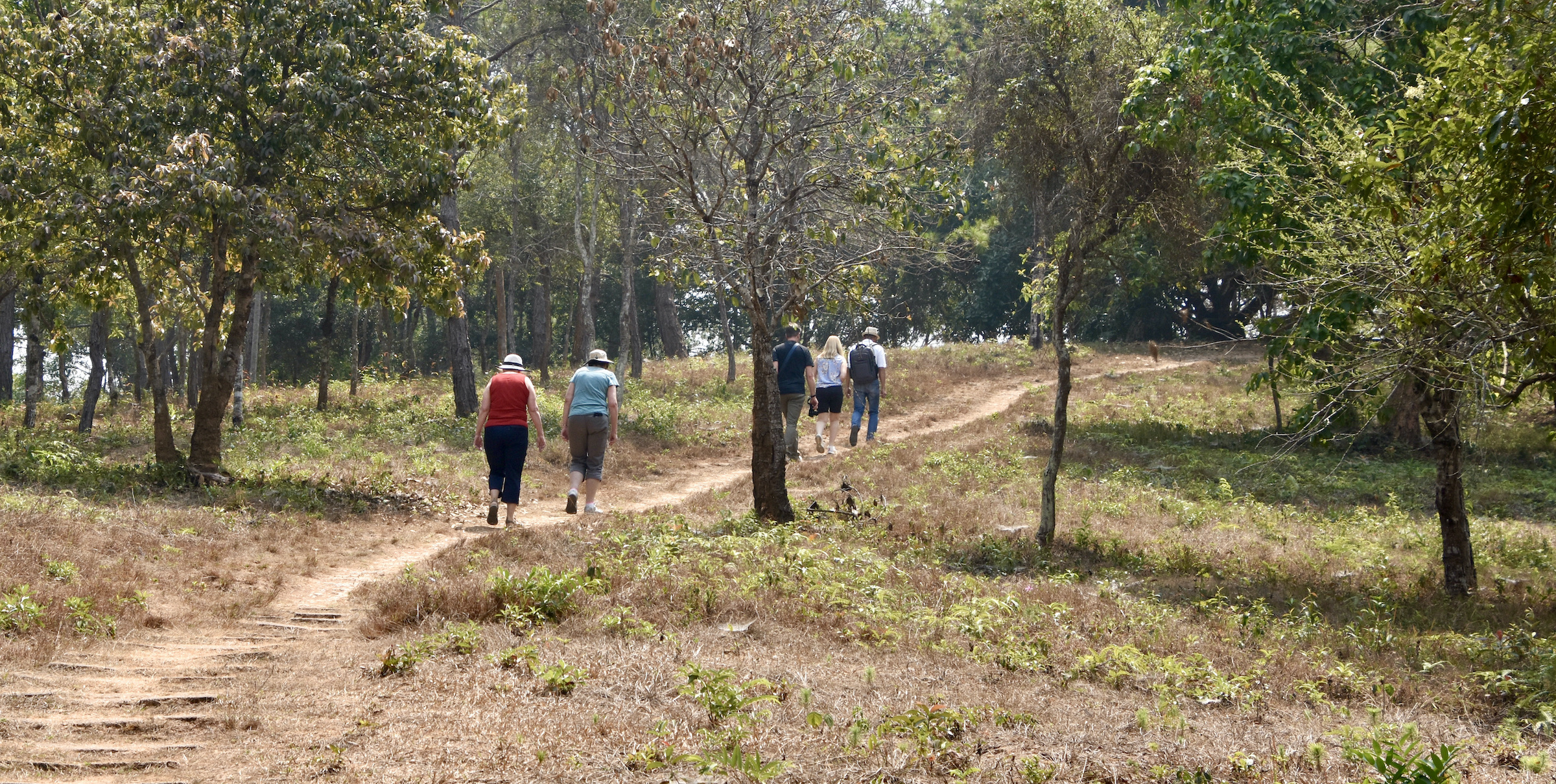
I found this site which is much smaller than Site 1, also much more atmospheric.
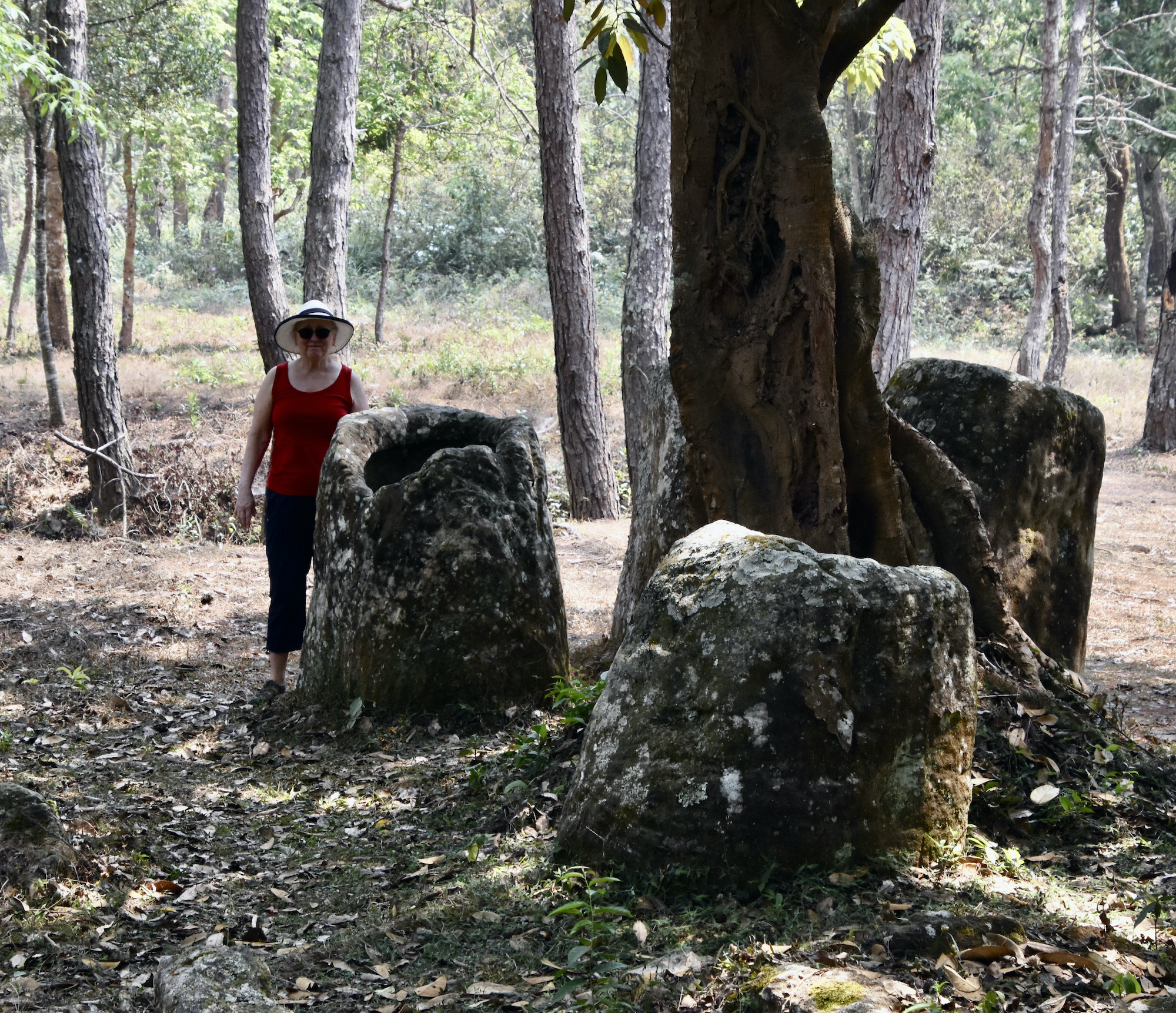 Alison at Site 2
Alison at Site 2
The jars were closer together and mostly in better shape than those at Site 1.
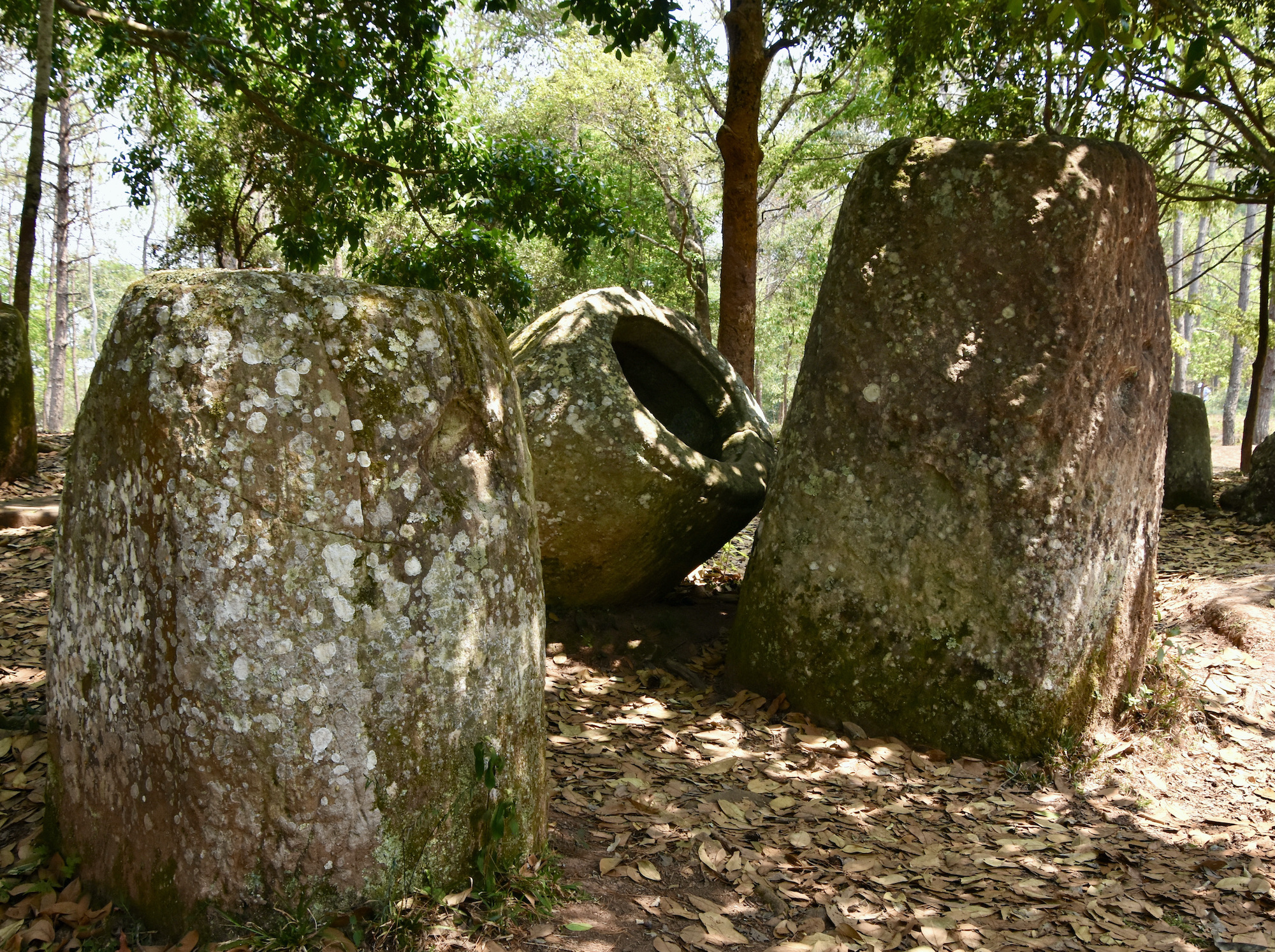
This horizontal one was quite different in appearance than the others, being longer and more slender.
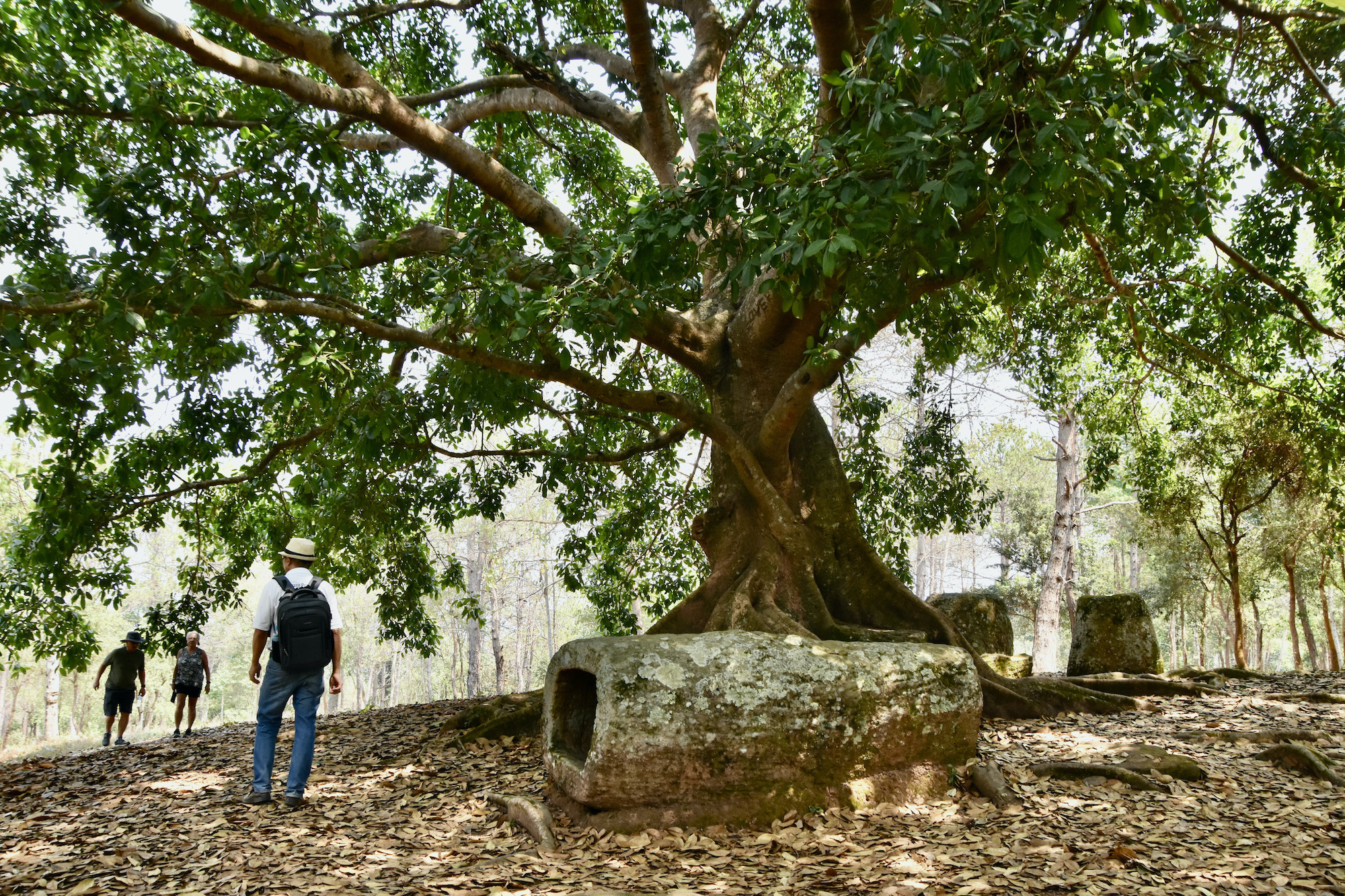
While the group took its time exploring Site 2, our AA guide Claude took a break leaning against a mini jar.
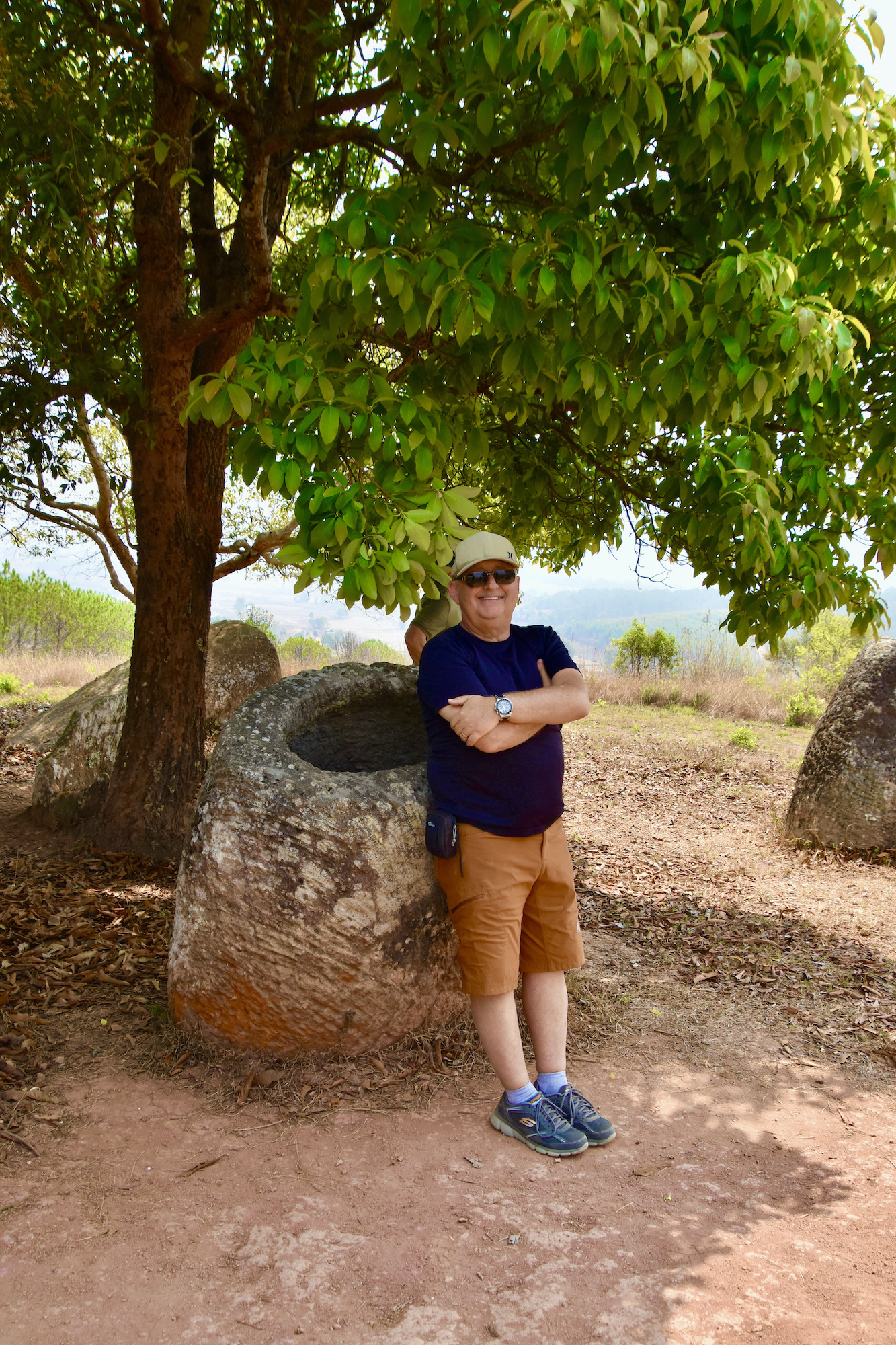
Site 3, Plain of Jars
While Site 2 had an air of mystery to it my favourite at the Plain of Jars was Site 3, almost as much as for what we saw on our way there as to the site itself. After crossing a bamboo bridge;
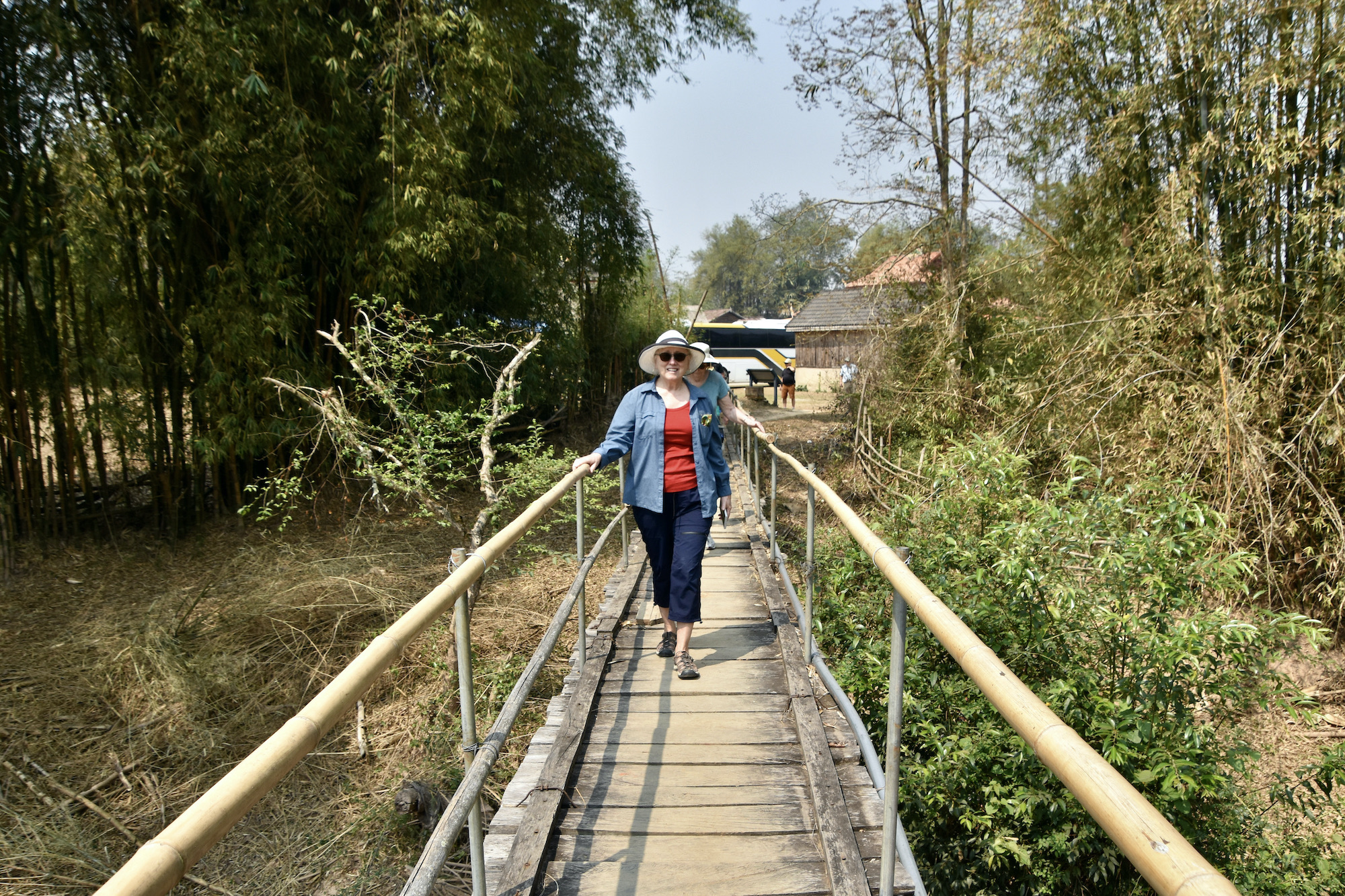
And a dried mud field;
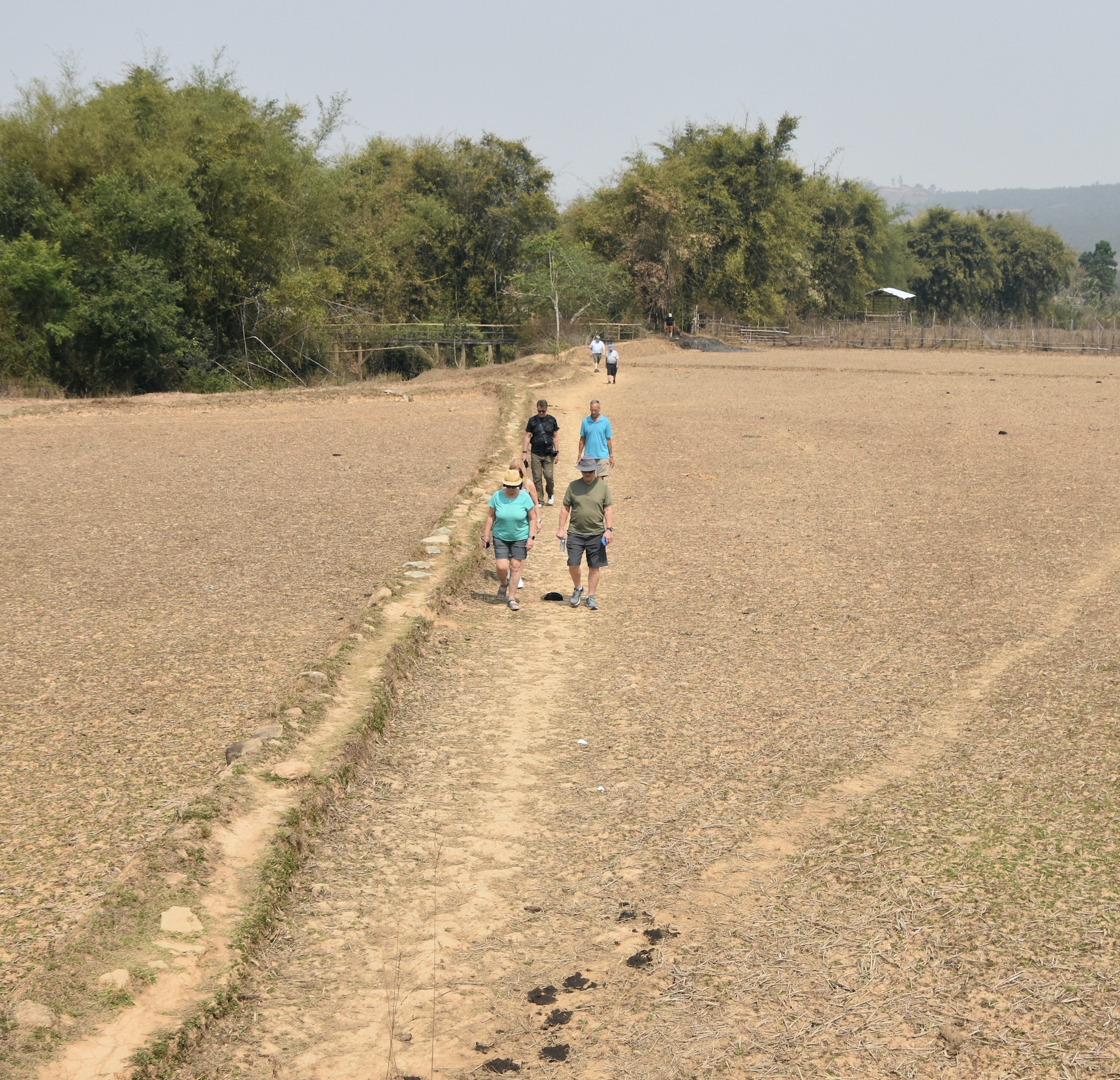
We then walked gingerly by a couple of water buffalo wallowing just a few feet away.
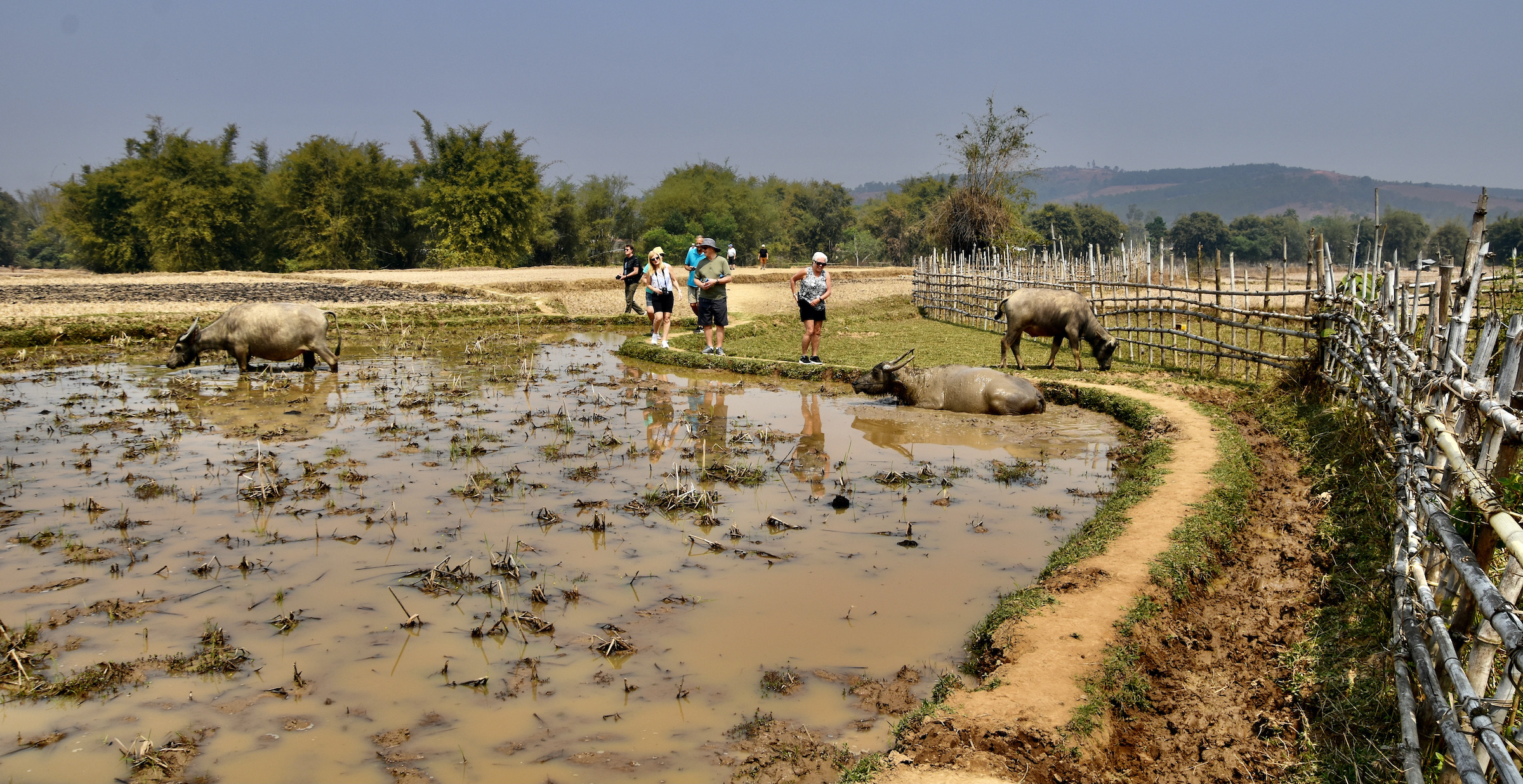
At the other side of this rice paddie a Lao woman was tending her garden and paying us no mind.
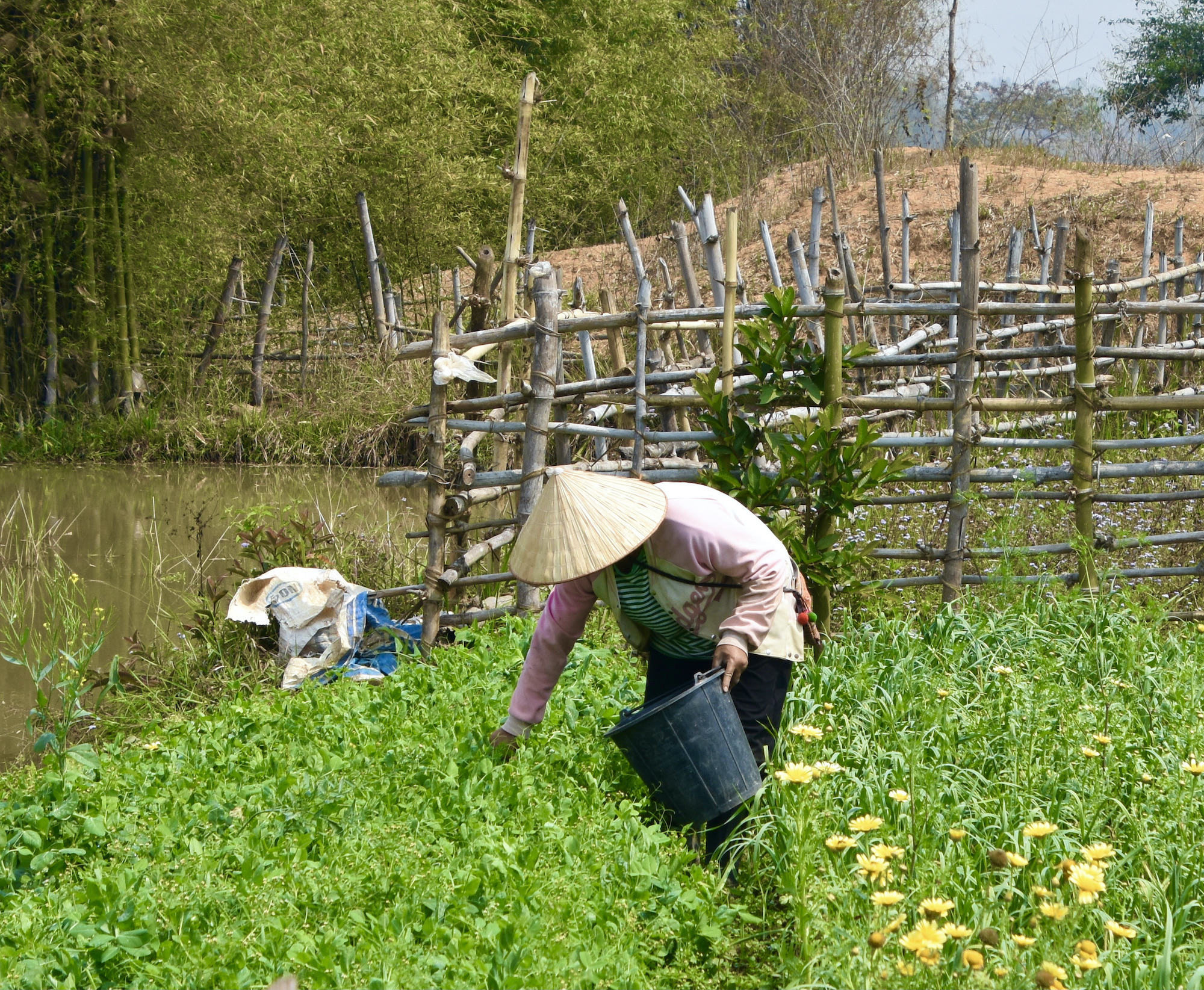
Lastly there was this forest lizard, Emma Gray variety that caught my eye, but it moved so fast the shot is a bit blurry.
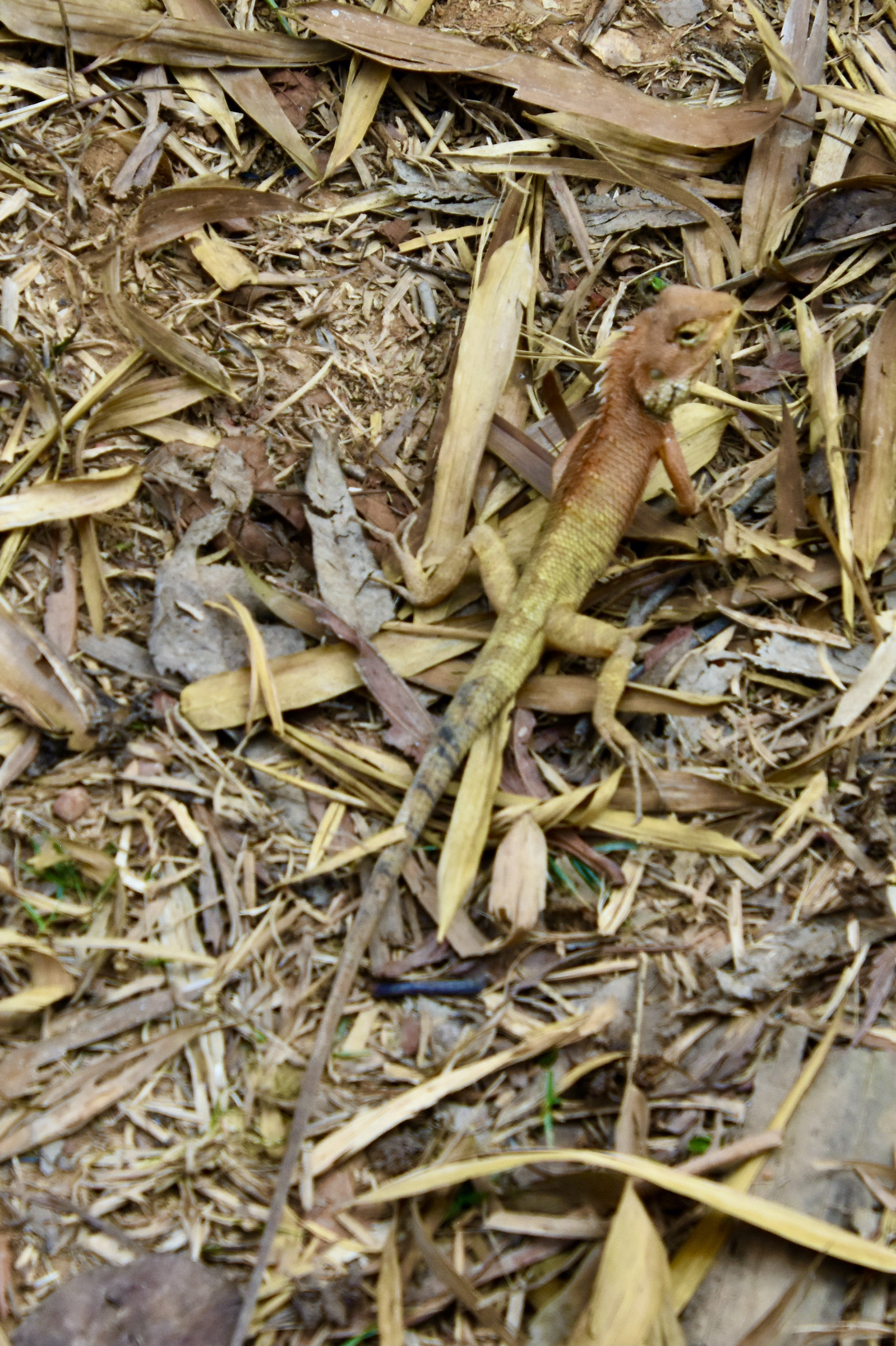
I don’t know why, but it’s moments like these that seem almost as important as the things every tourist comes to see. This short walk epitomized, for me, the rural Laotian way of life.
That being said, Site 3 was pretty impressive as well.
It was not large, but like Site 2 in a shaded location among the trees and much closer together than Site 1.
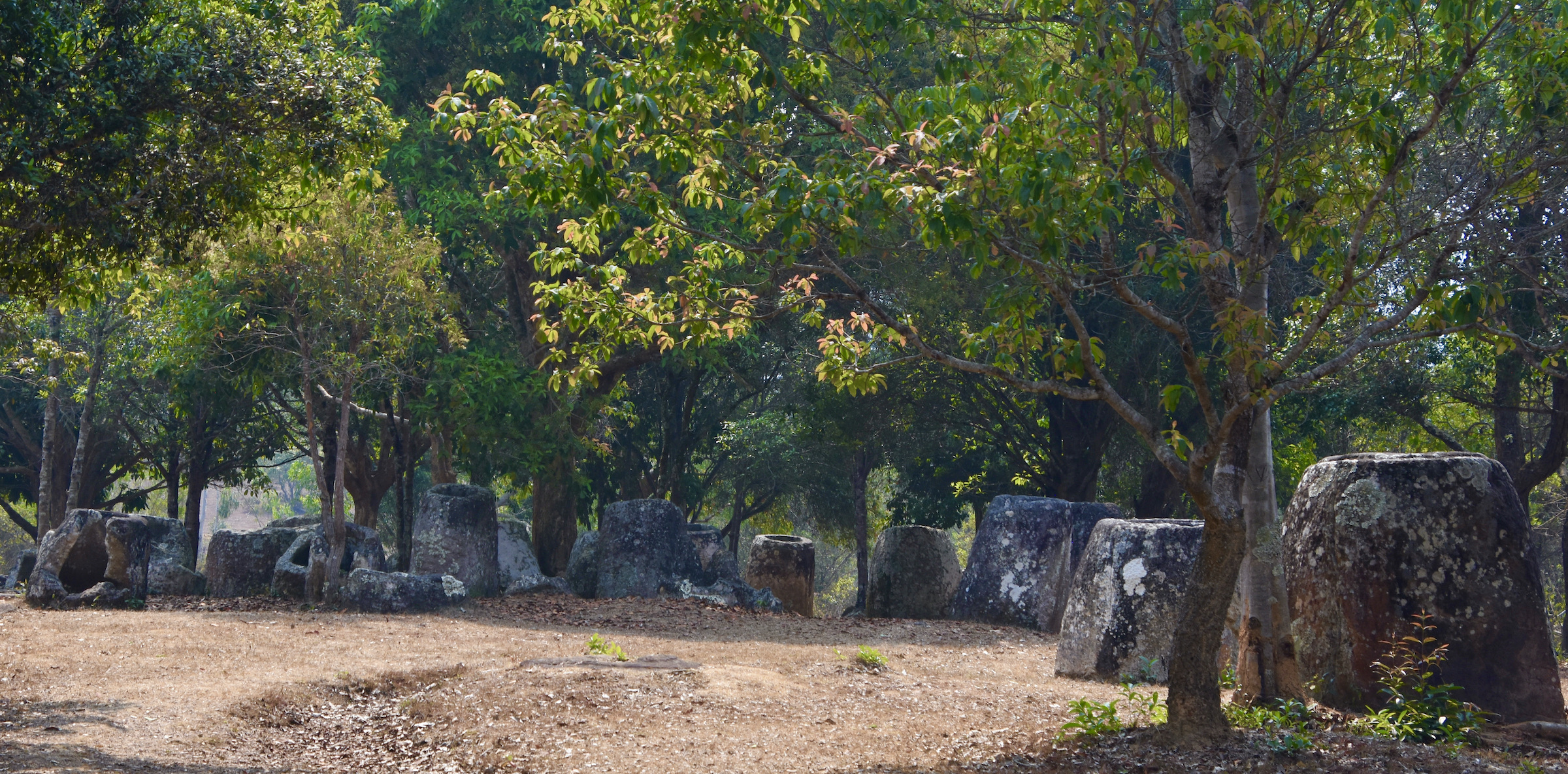
The jars here were smaller than those at Sites 1 and 2 as you can tell from this photo.
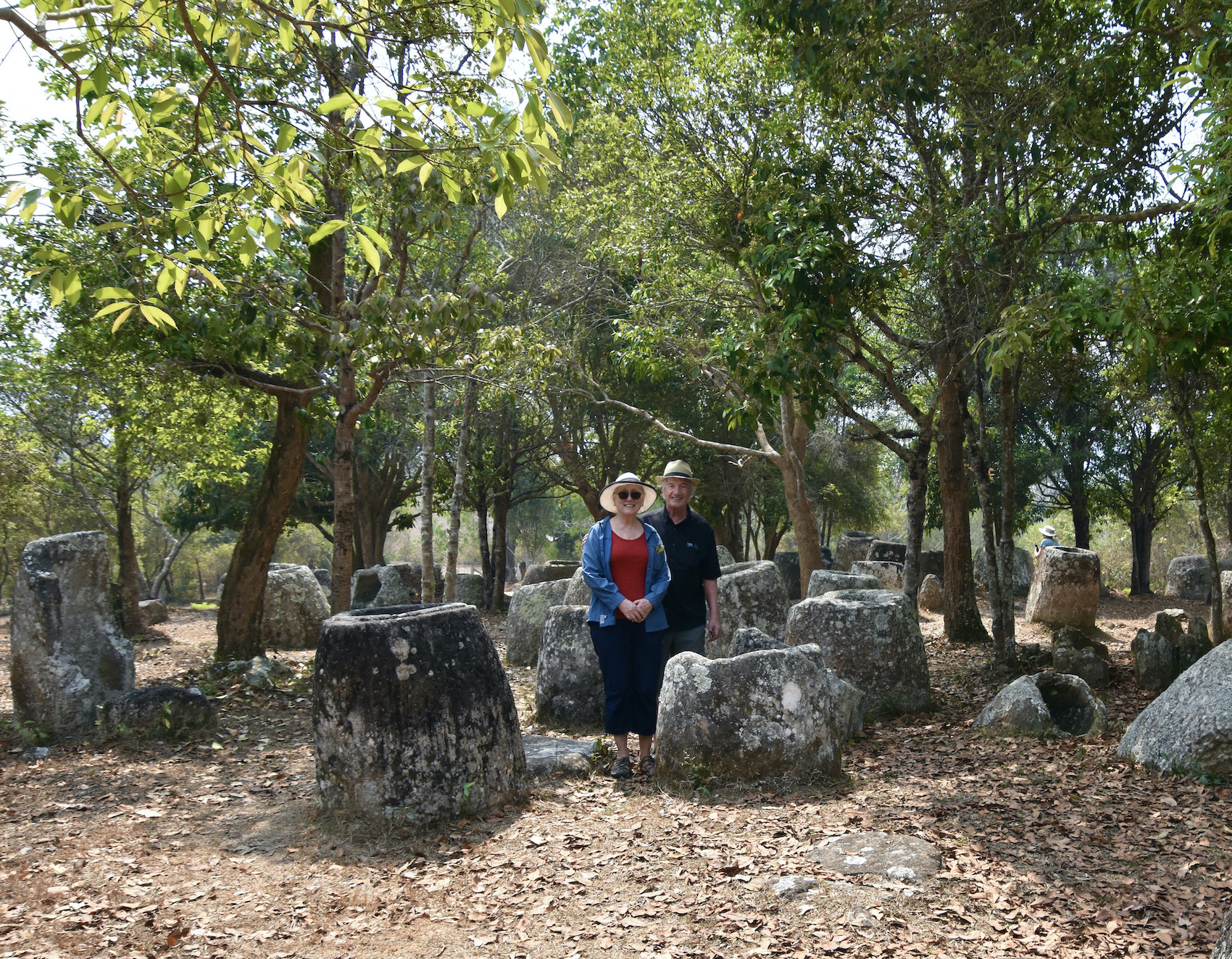
After retracing our steps back to the bus our exploration of the Plain of Jars was complete, but we had one more stop.
The MAG Visitor Center
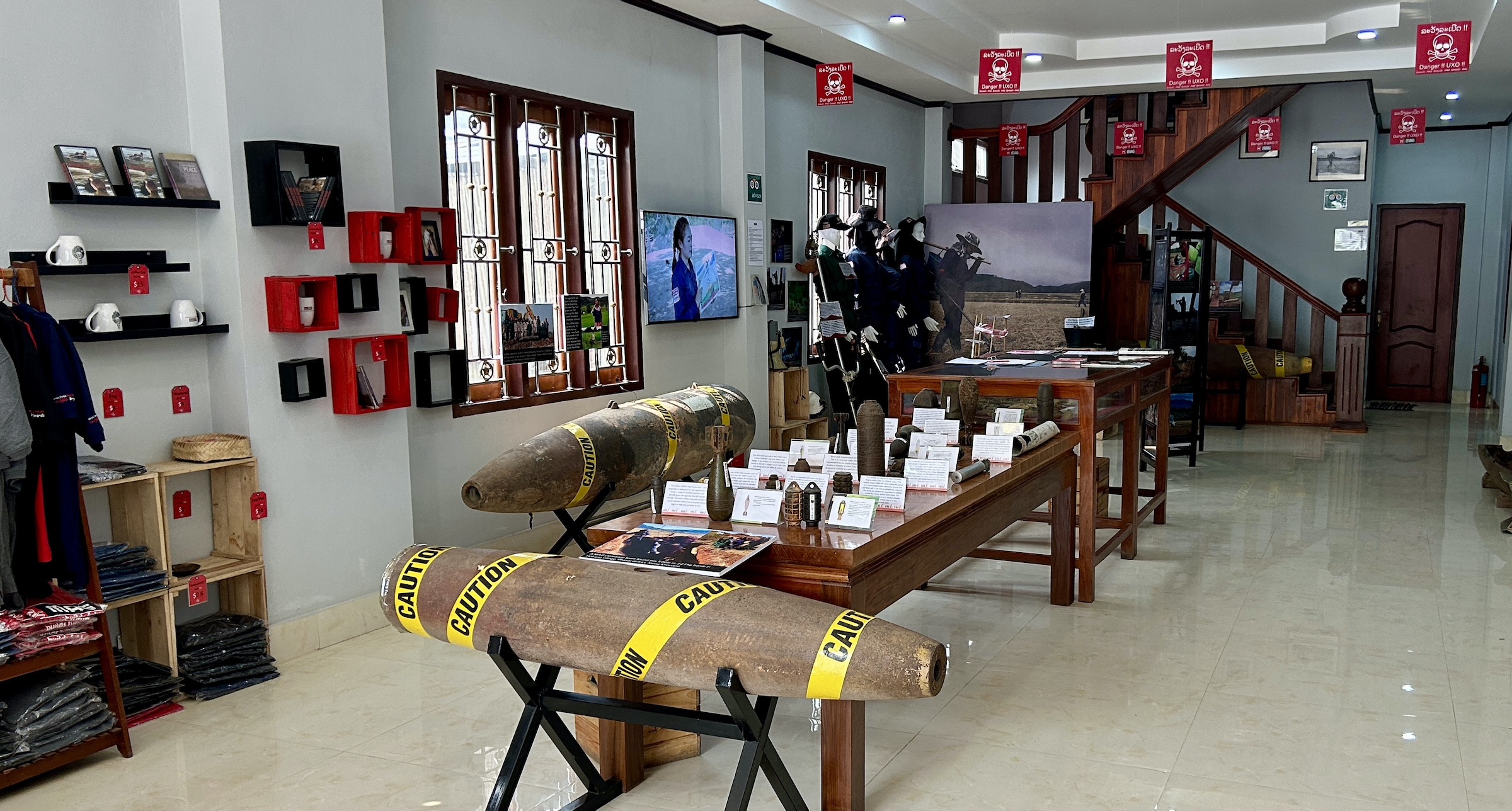
MAG which stands for Mines Advisory Group is a non-profit that is doing its best to find and neutralize the literally millions of unexploded bombs aka UXO in Laos. This poster gives some idea of the intensity of the bombing in the Plain of Jars area which is the large red spot near the top of the map.
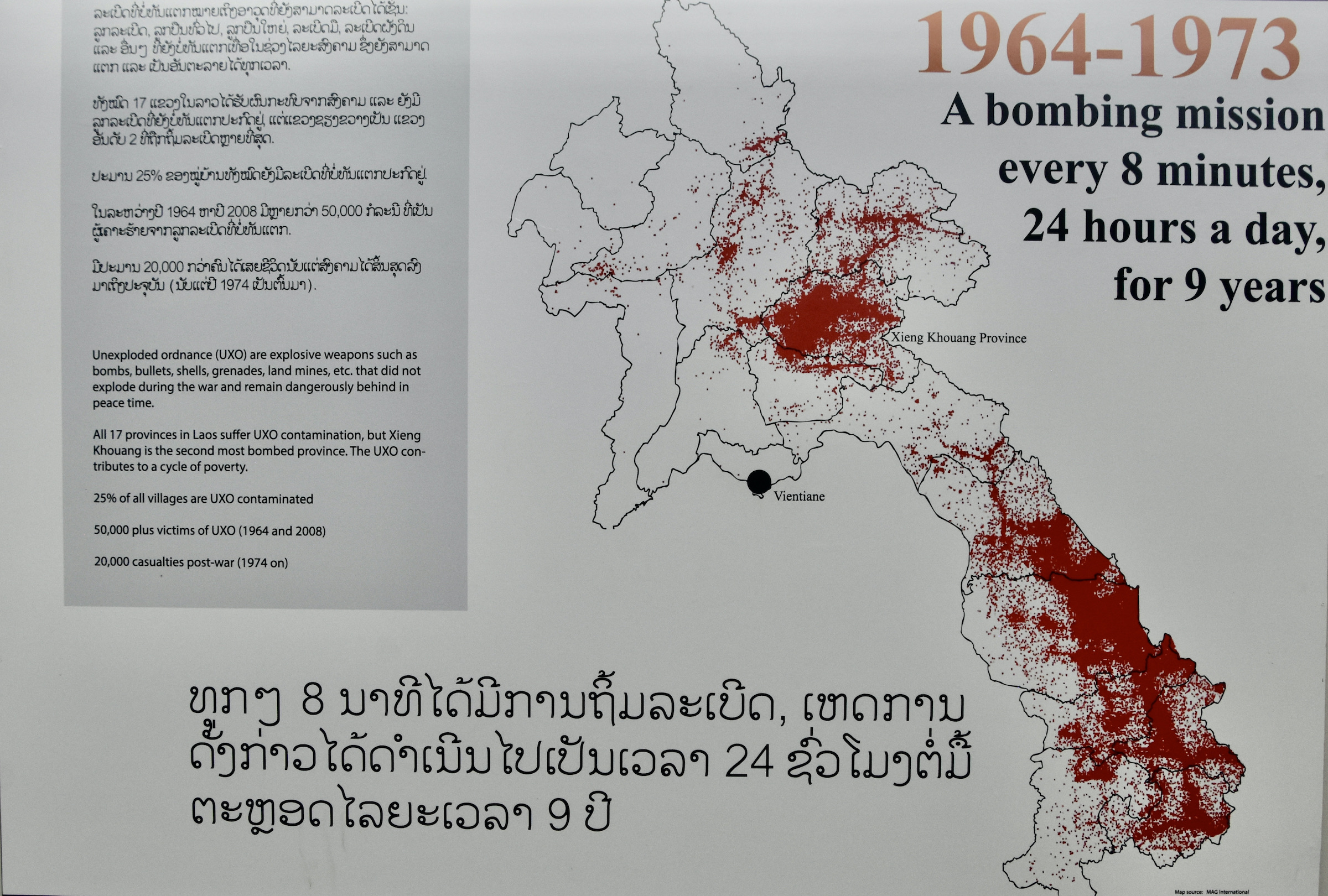
We watched an award-winning documentary on the consequences to the Laotian people of UXO and those who are contributing to the cleanup. I have to say I was not impressed with the paltry amount that the U.S. is putting into this considering they were the proximate cause. I think most if not all of the group made a donation and/or bought a MAG souvenir. It was the least we could do.
Stepping back onto the bus I noticed the Craters Cafe across the street which has some huge bombs on its front porch which I presume have been neutralized. Imagine living in a country where things like this are just a part of daily life?
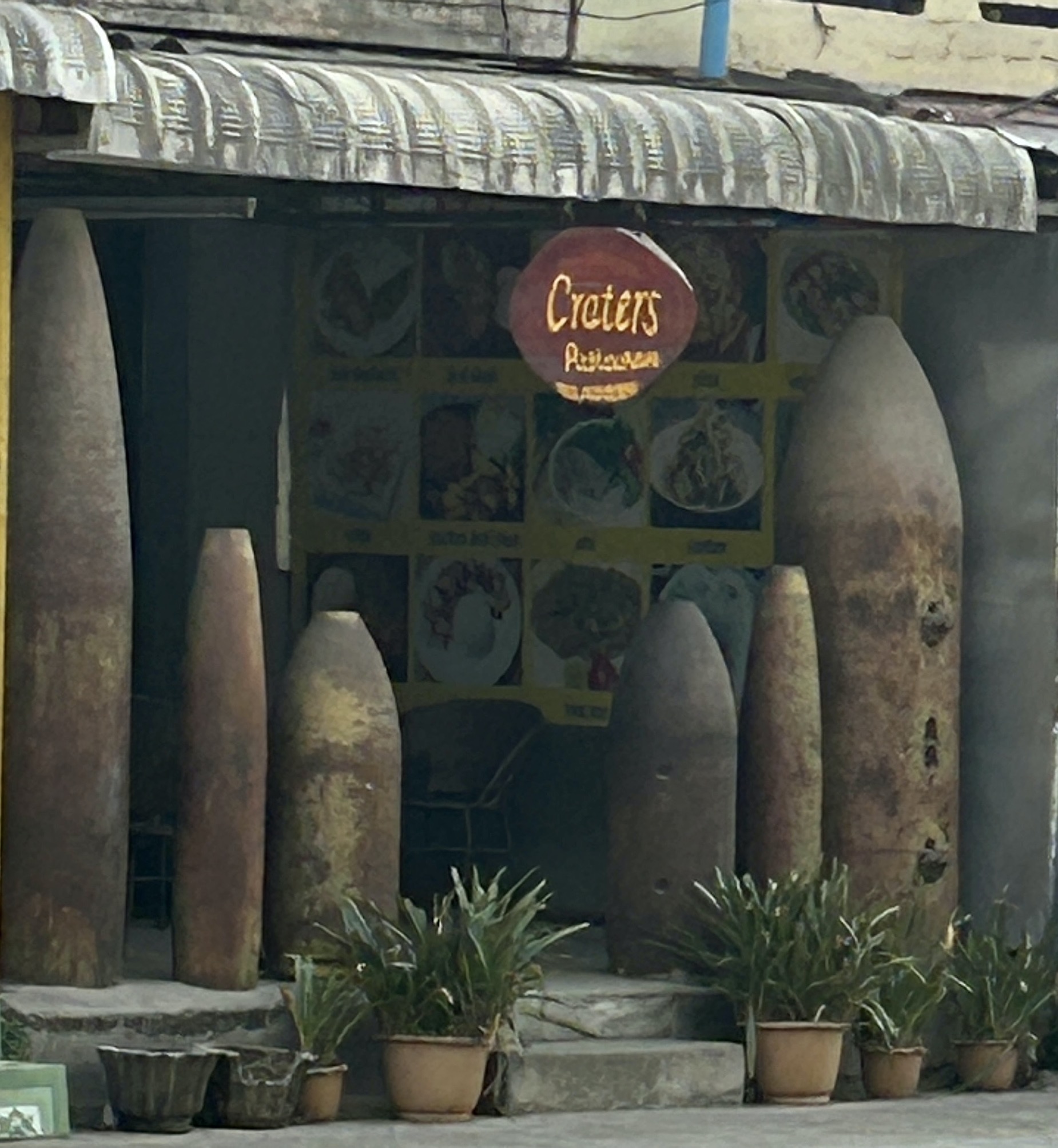
I feel privileged to have seen the Plain of Jars. Very few people get the opportunity. I will definitely go down as one of the highlights of the Adventures Abroad Laos tour.
In the next post we’ll leave behind rural Laos and visited the surprisingly sophisticated and interesting capital city, Vientiane. Hope to see you there.


